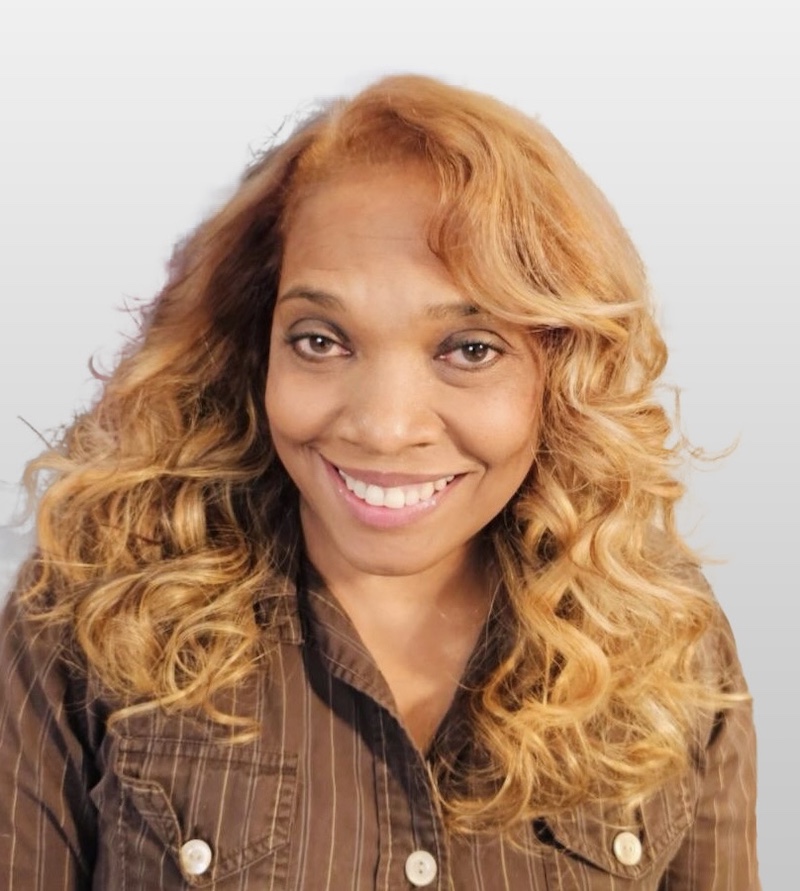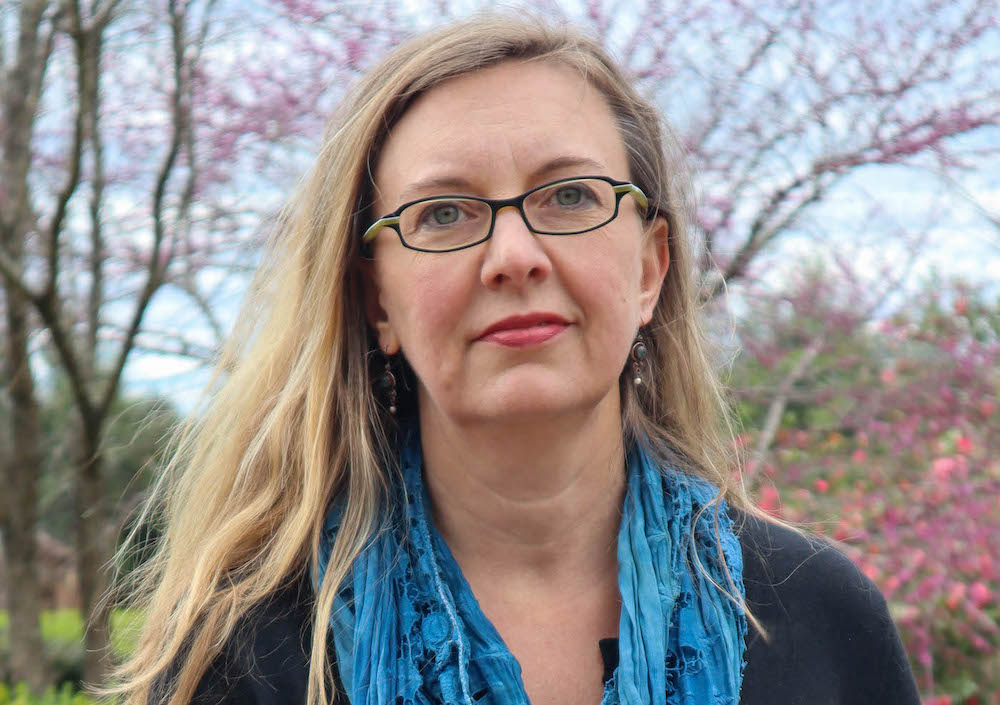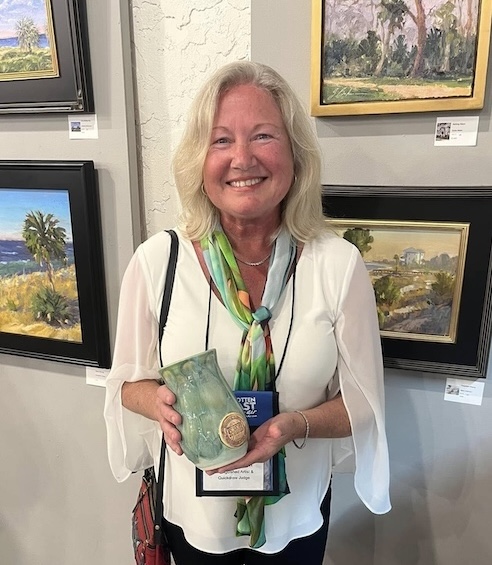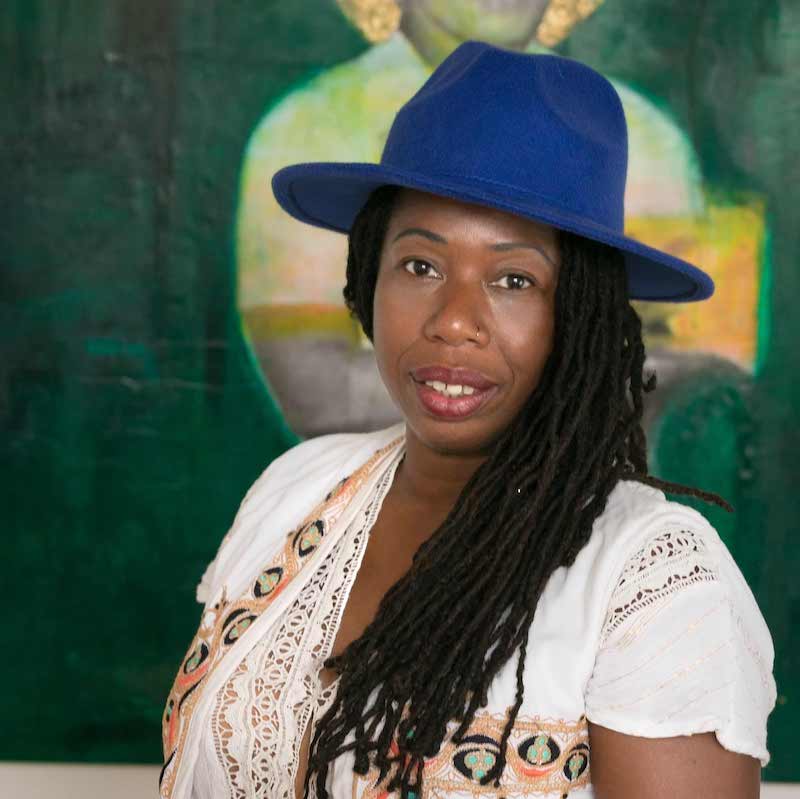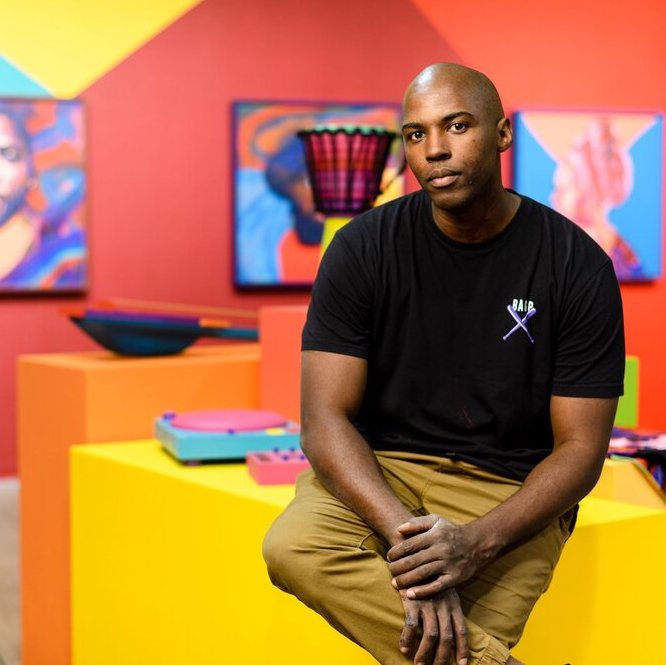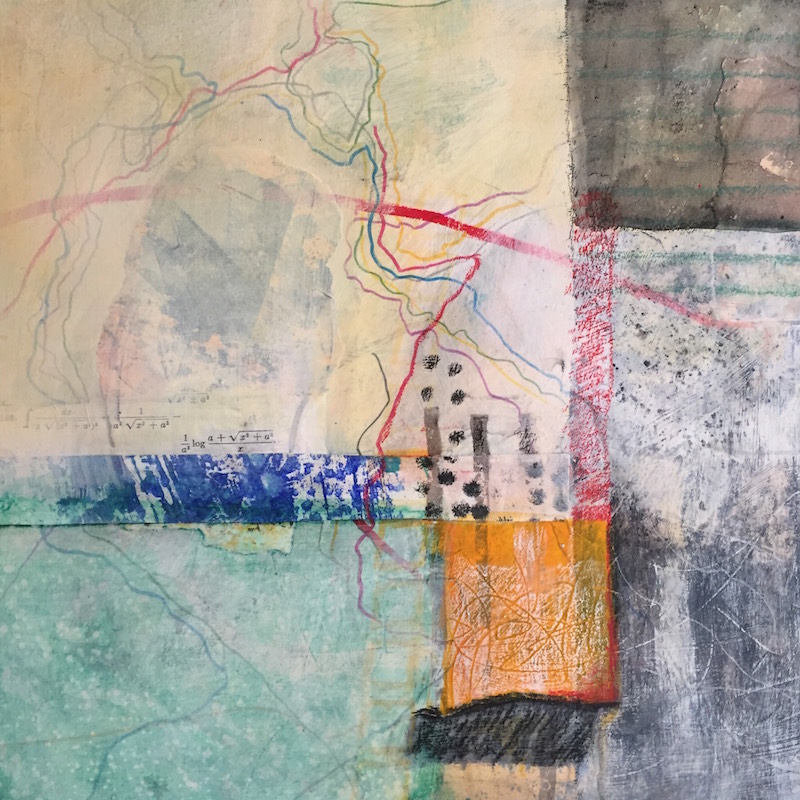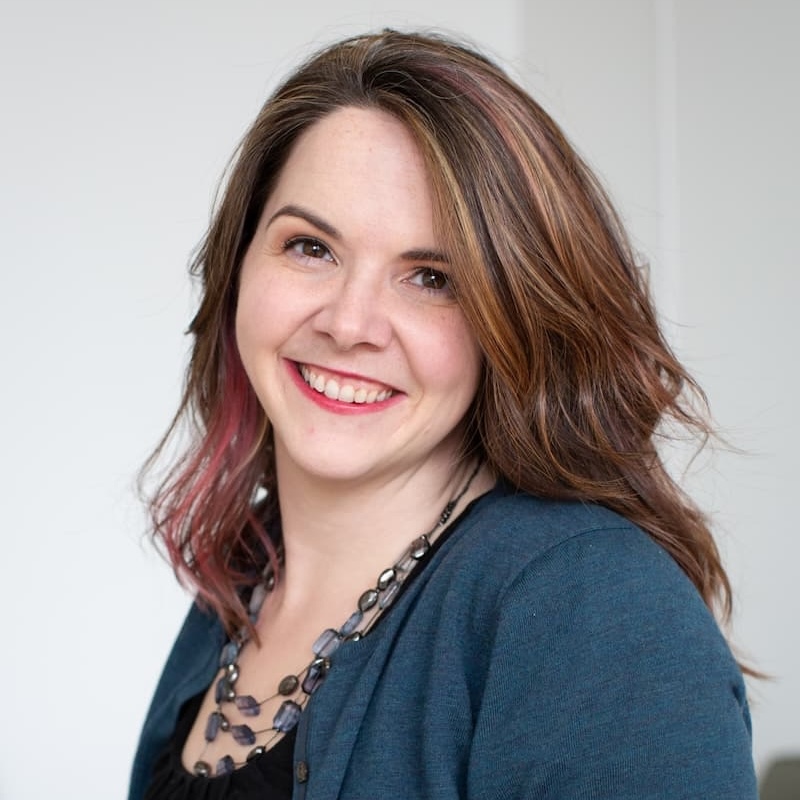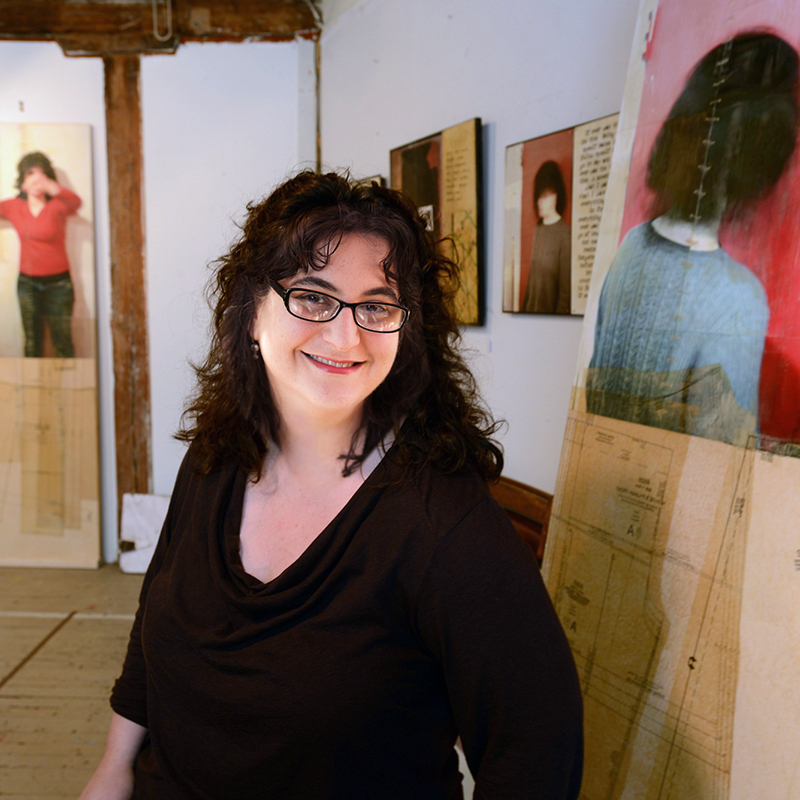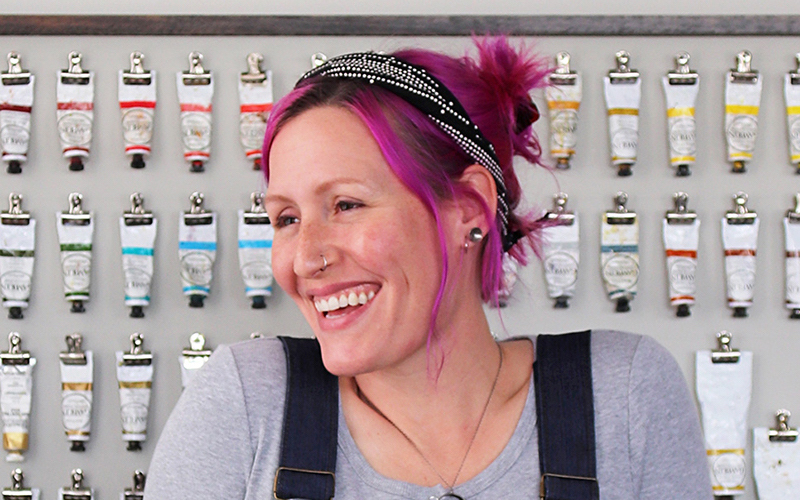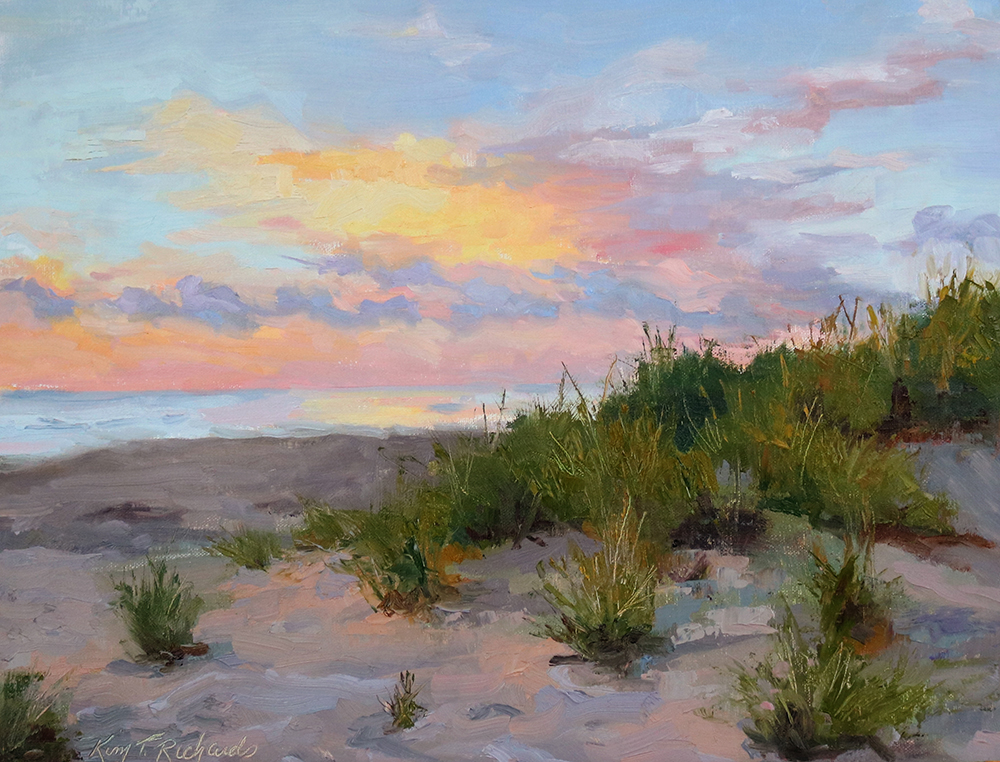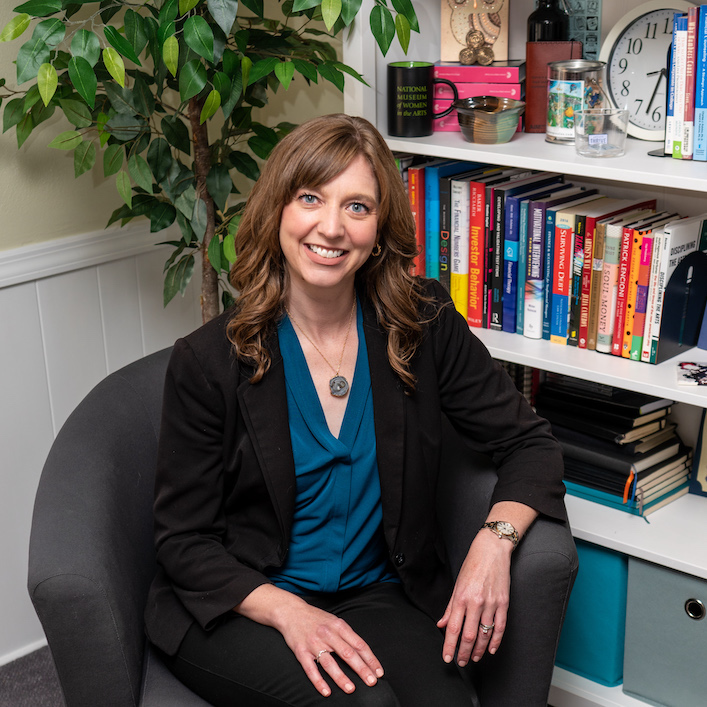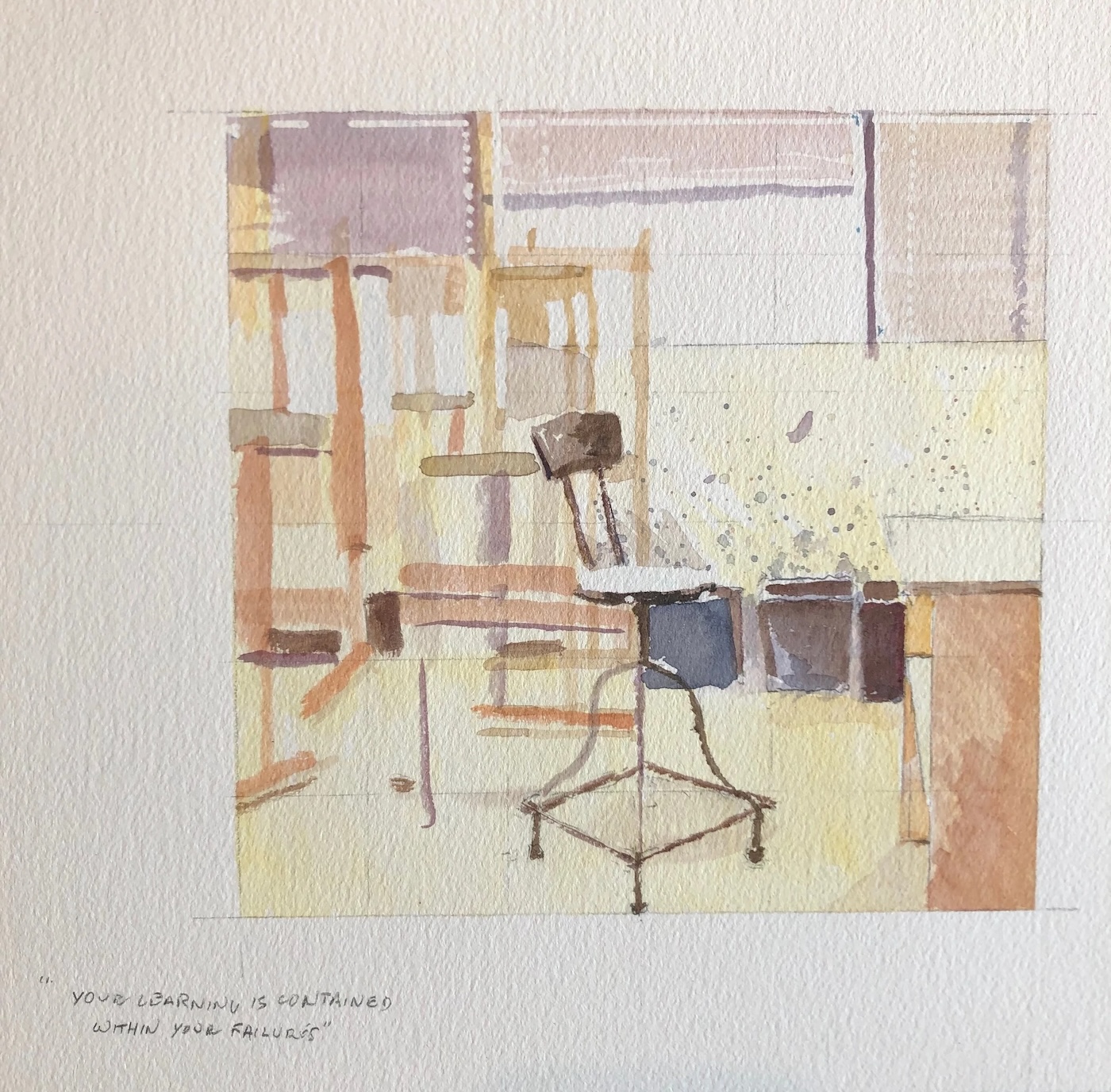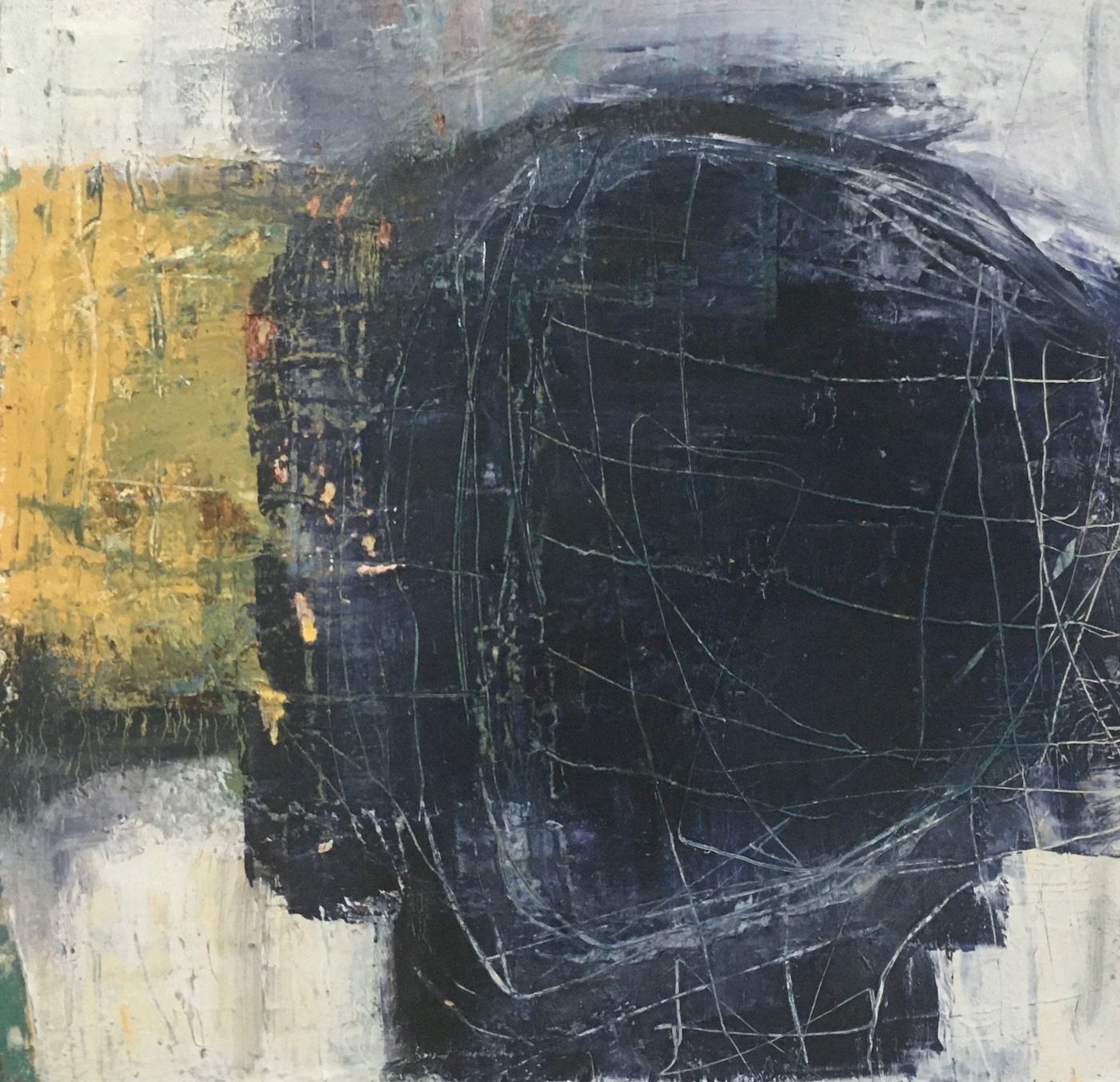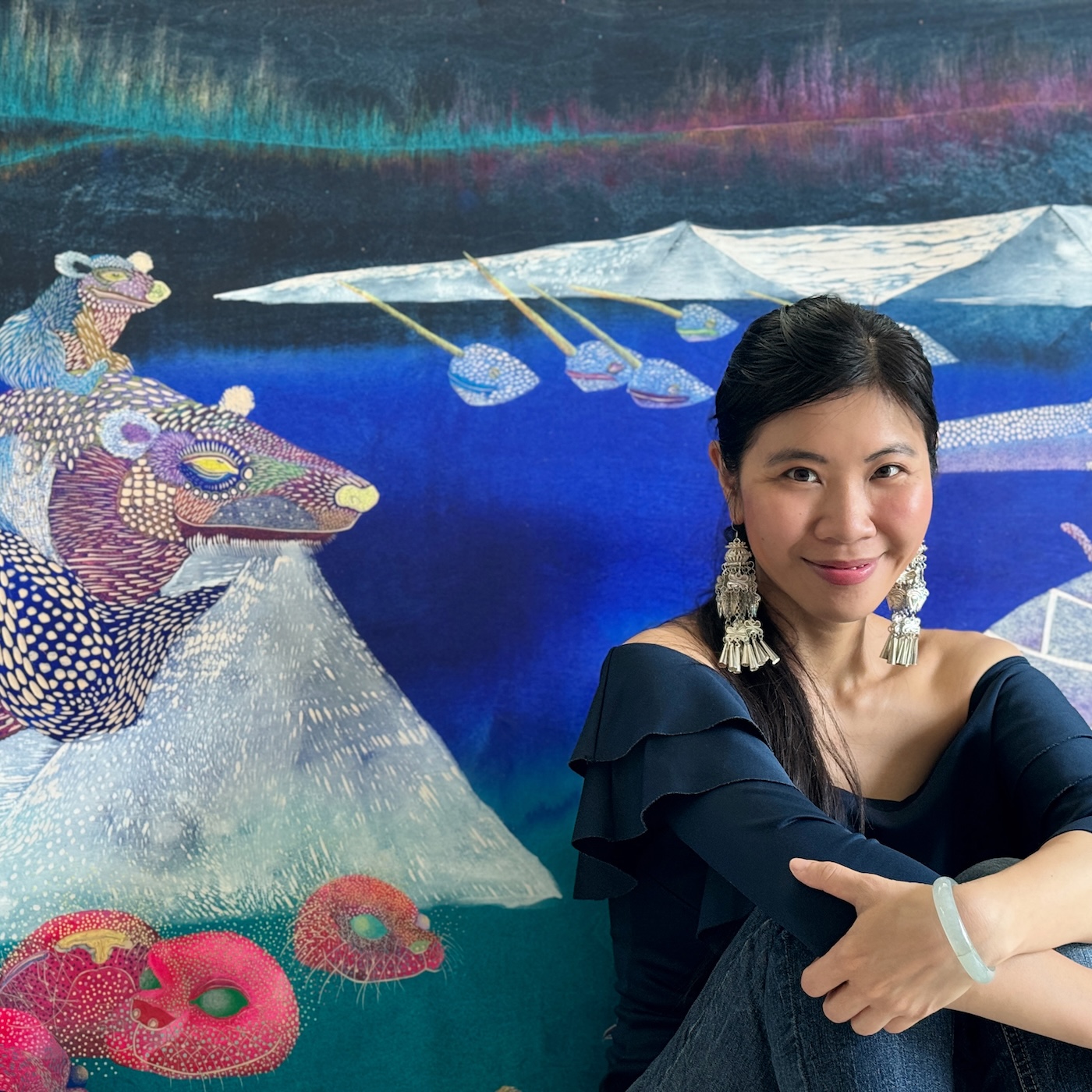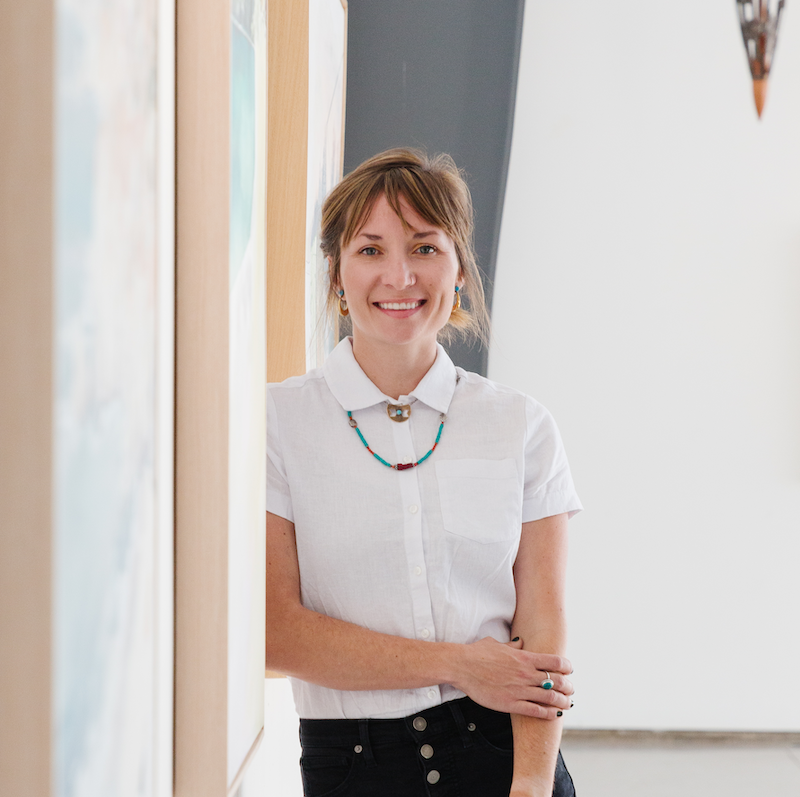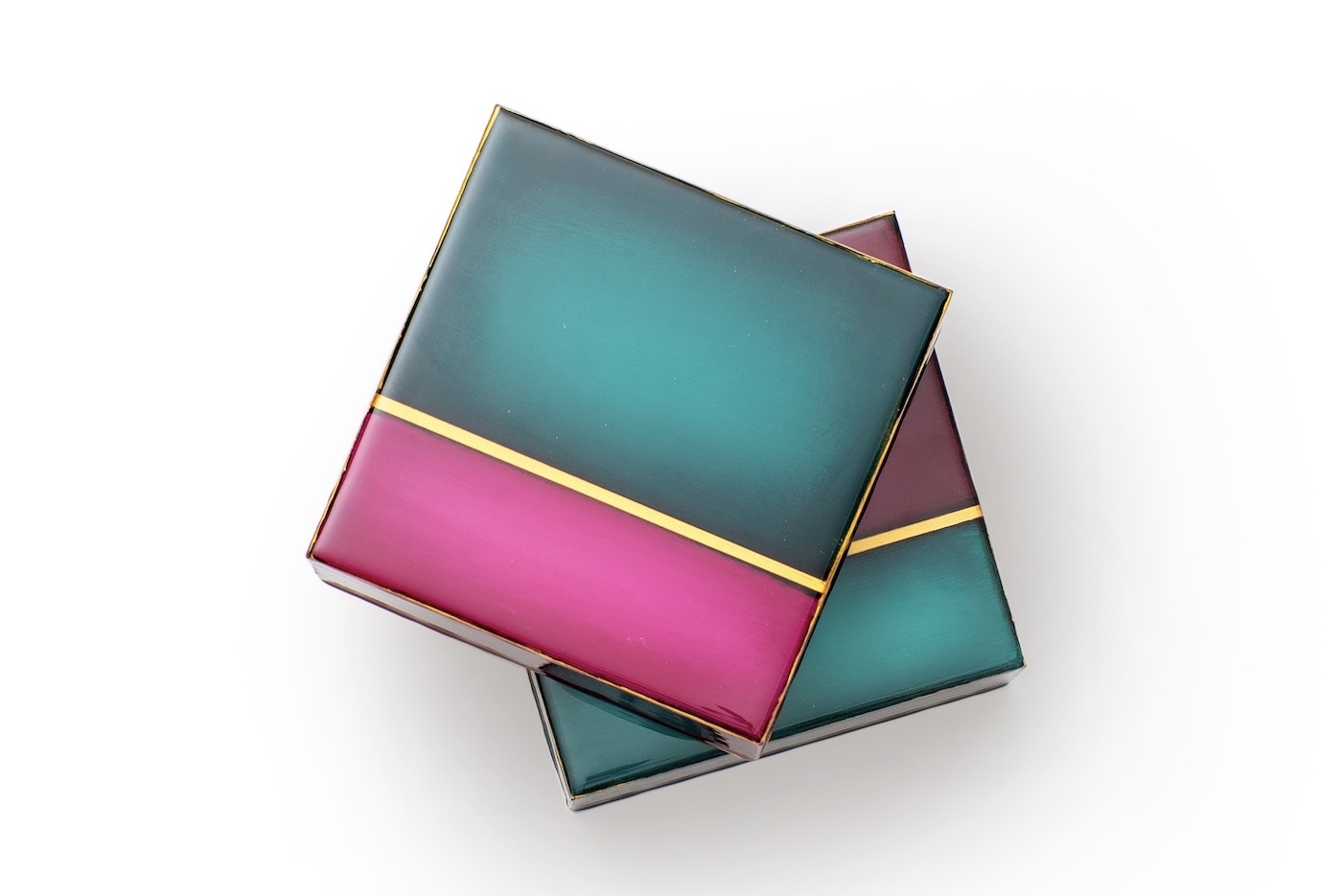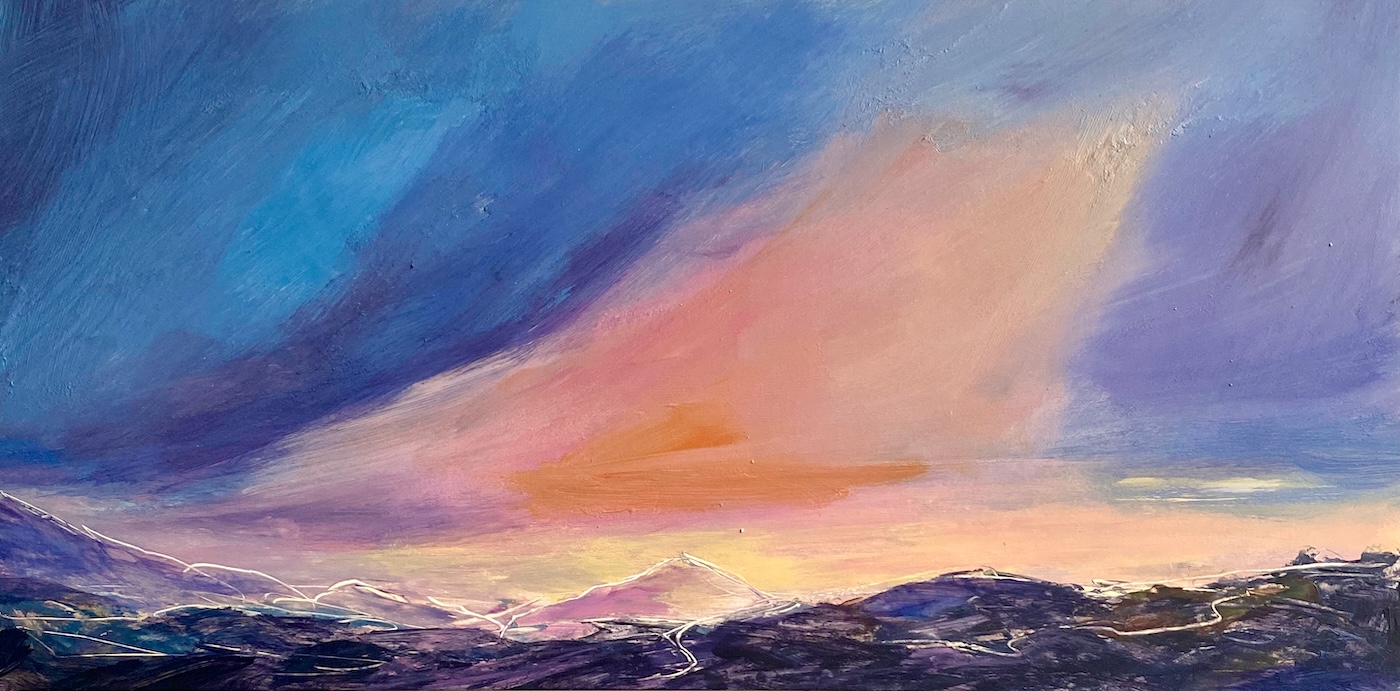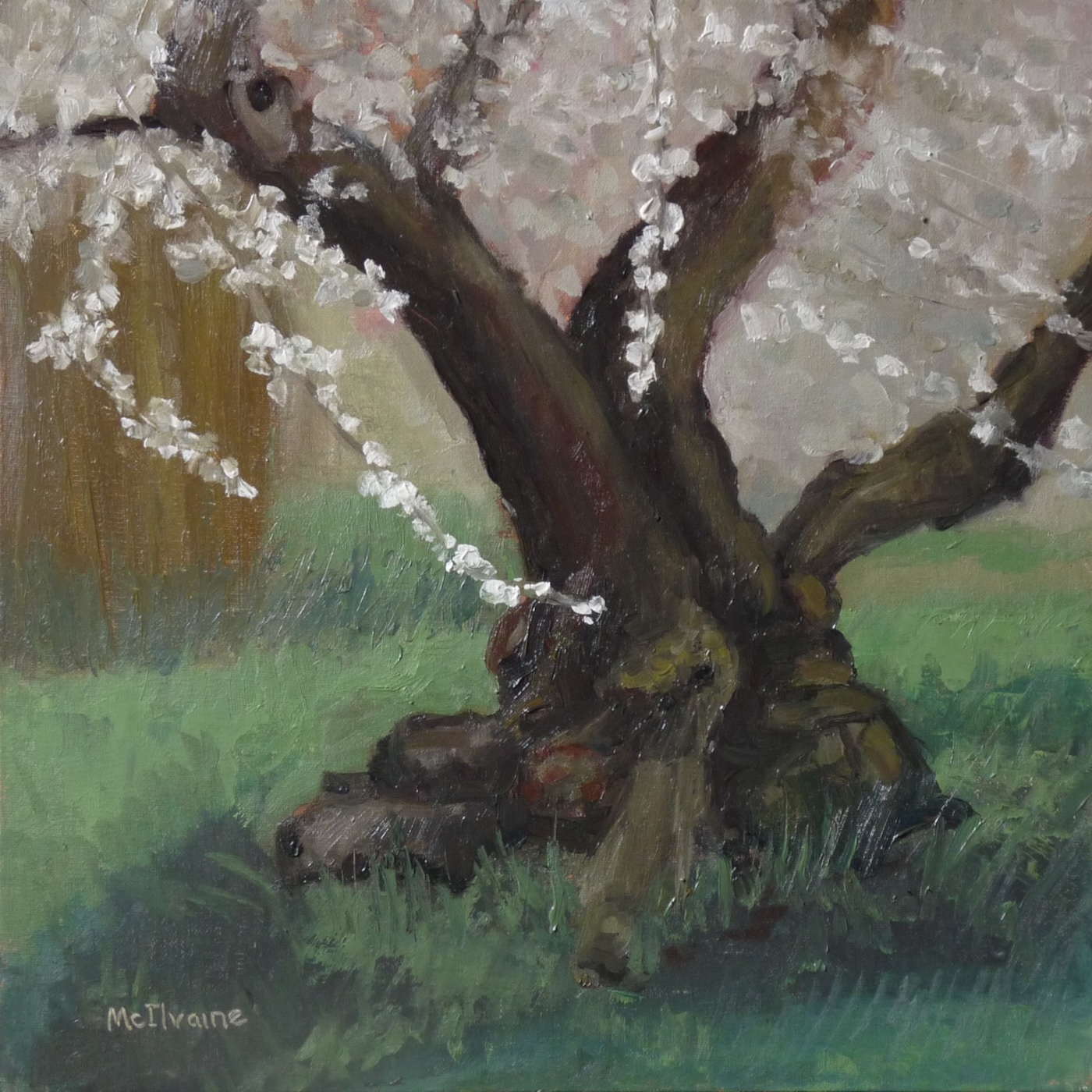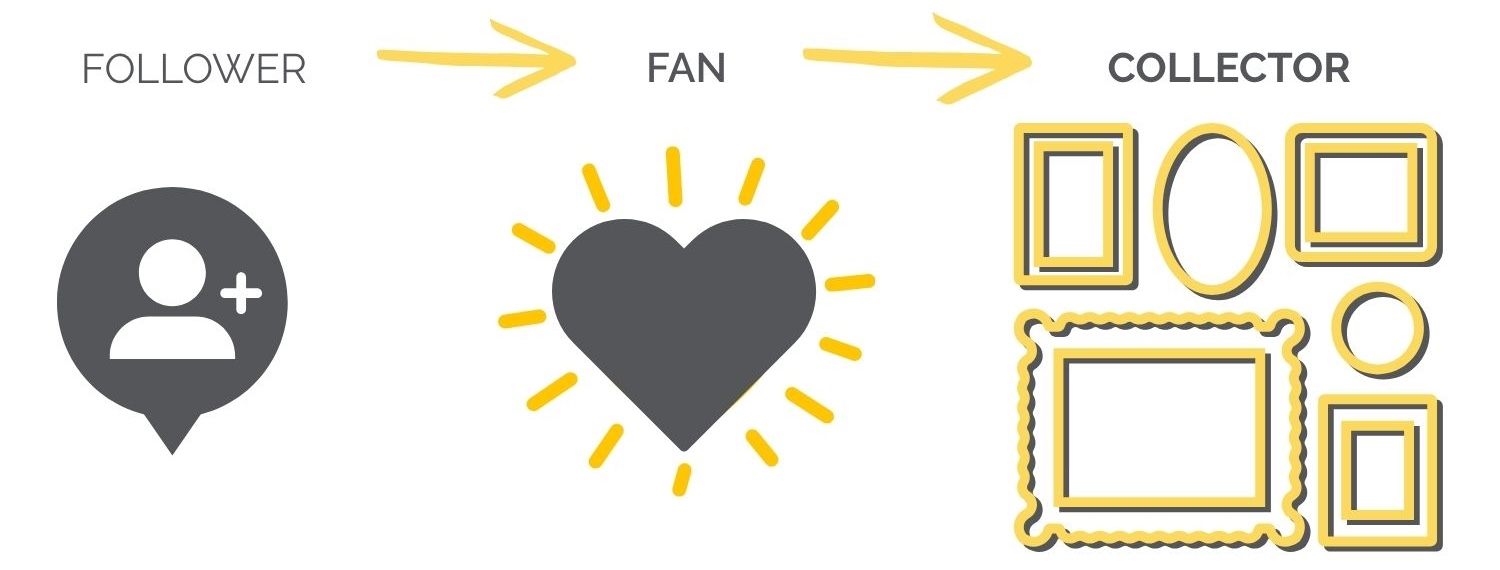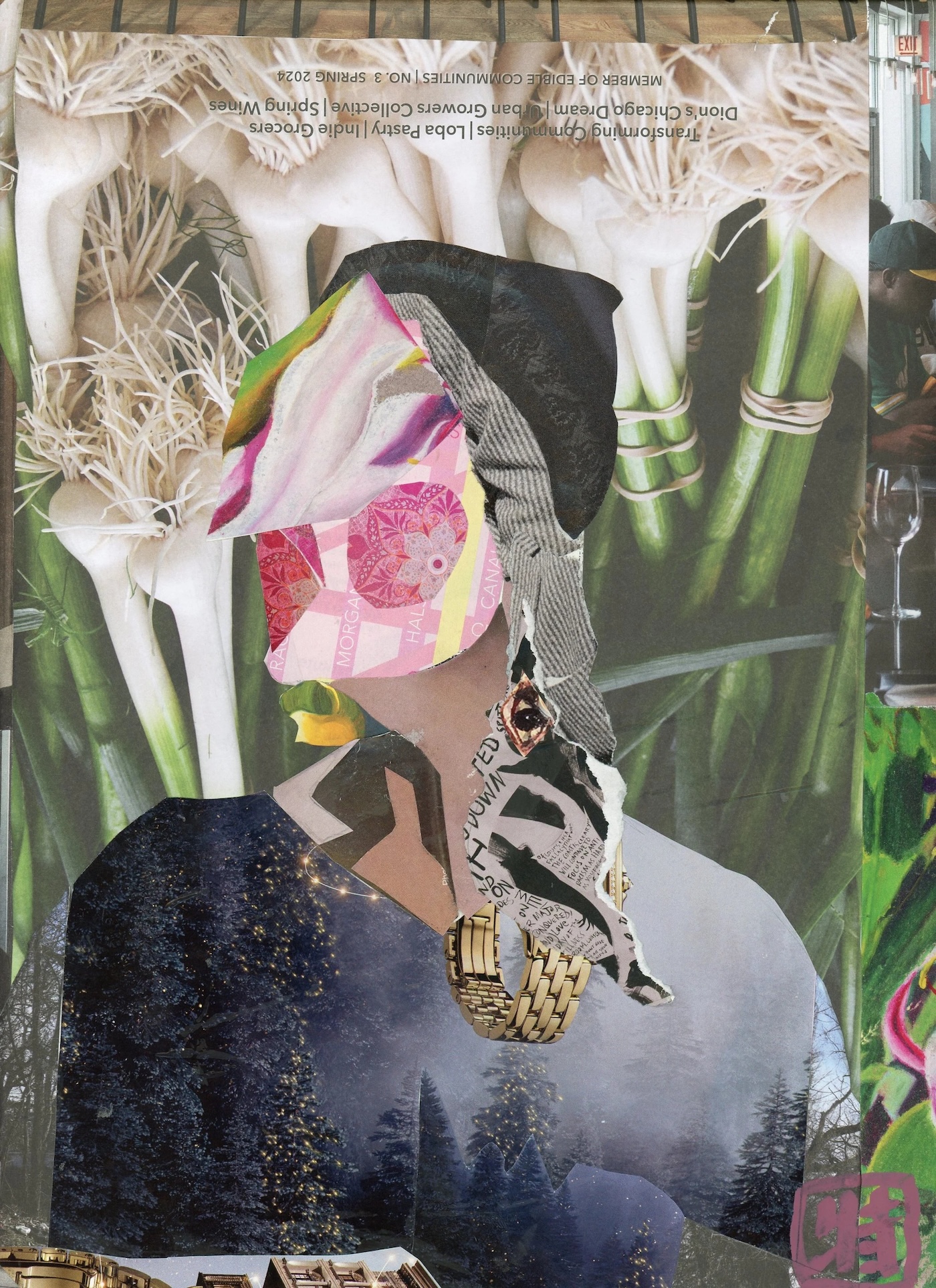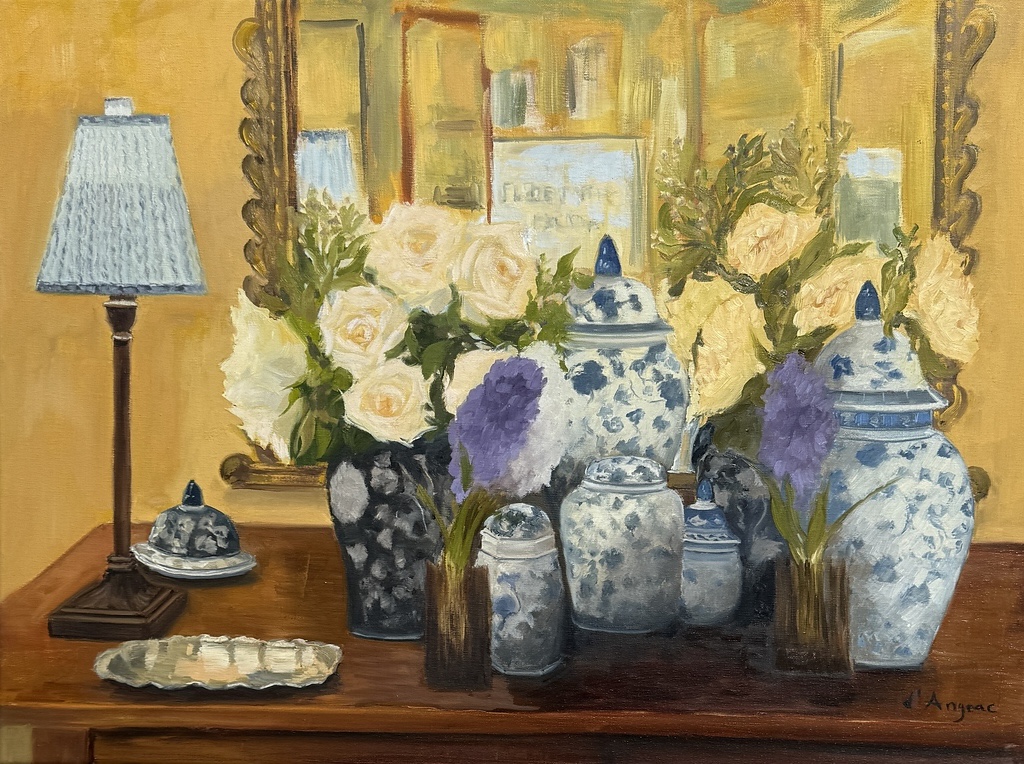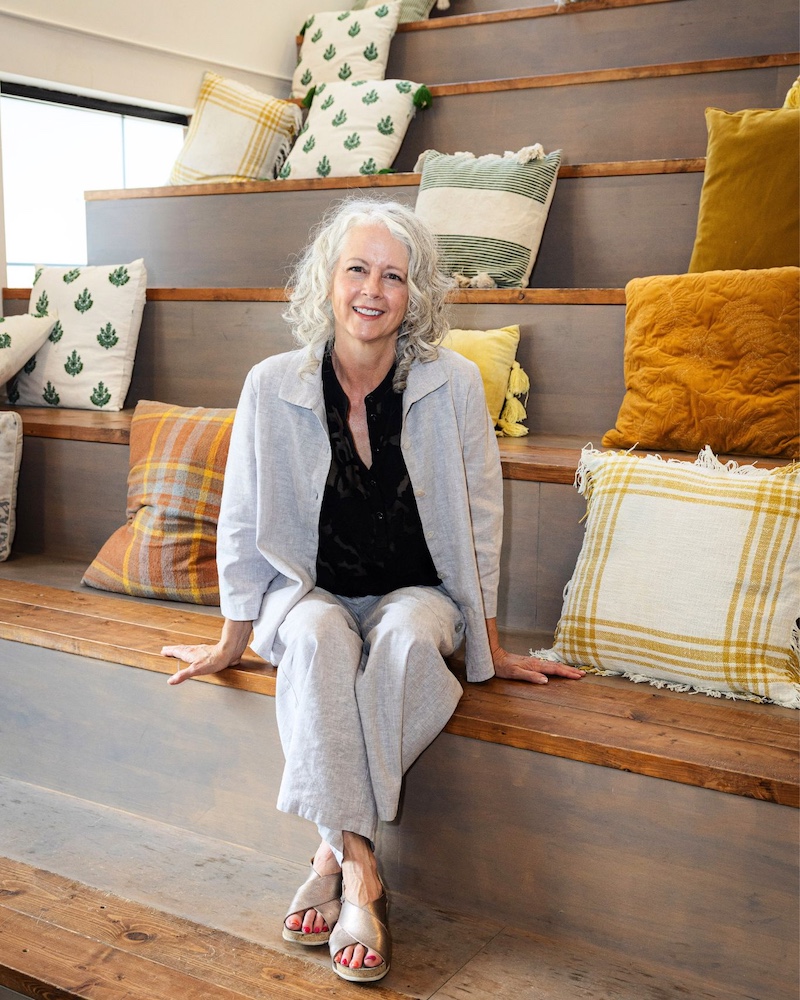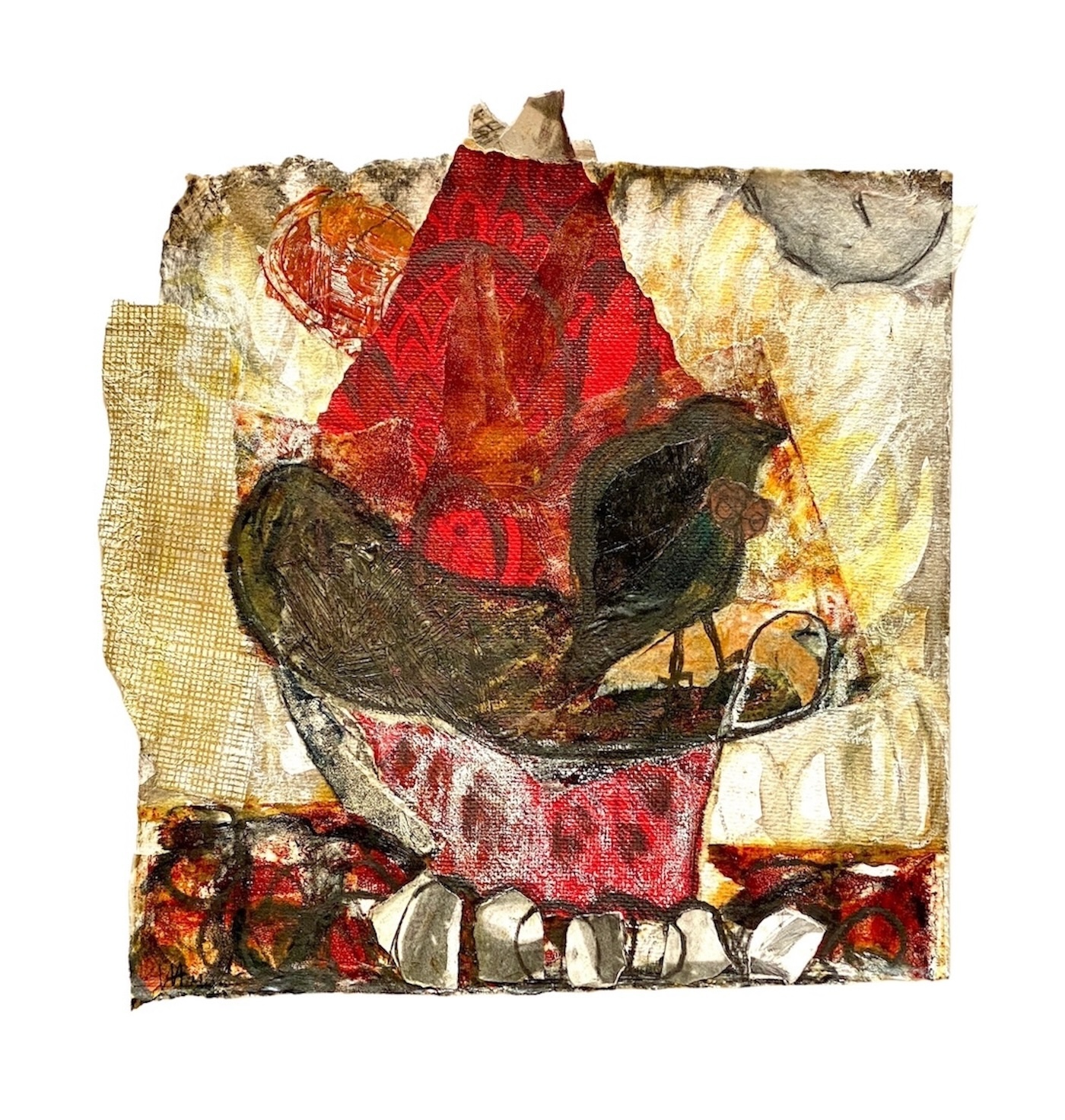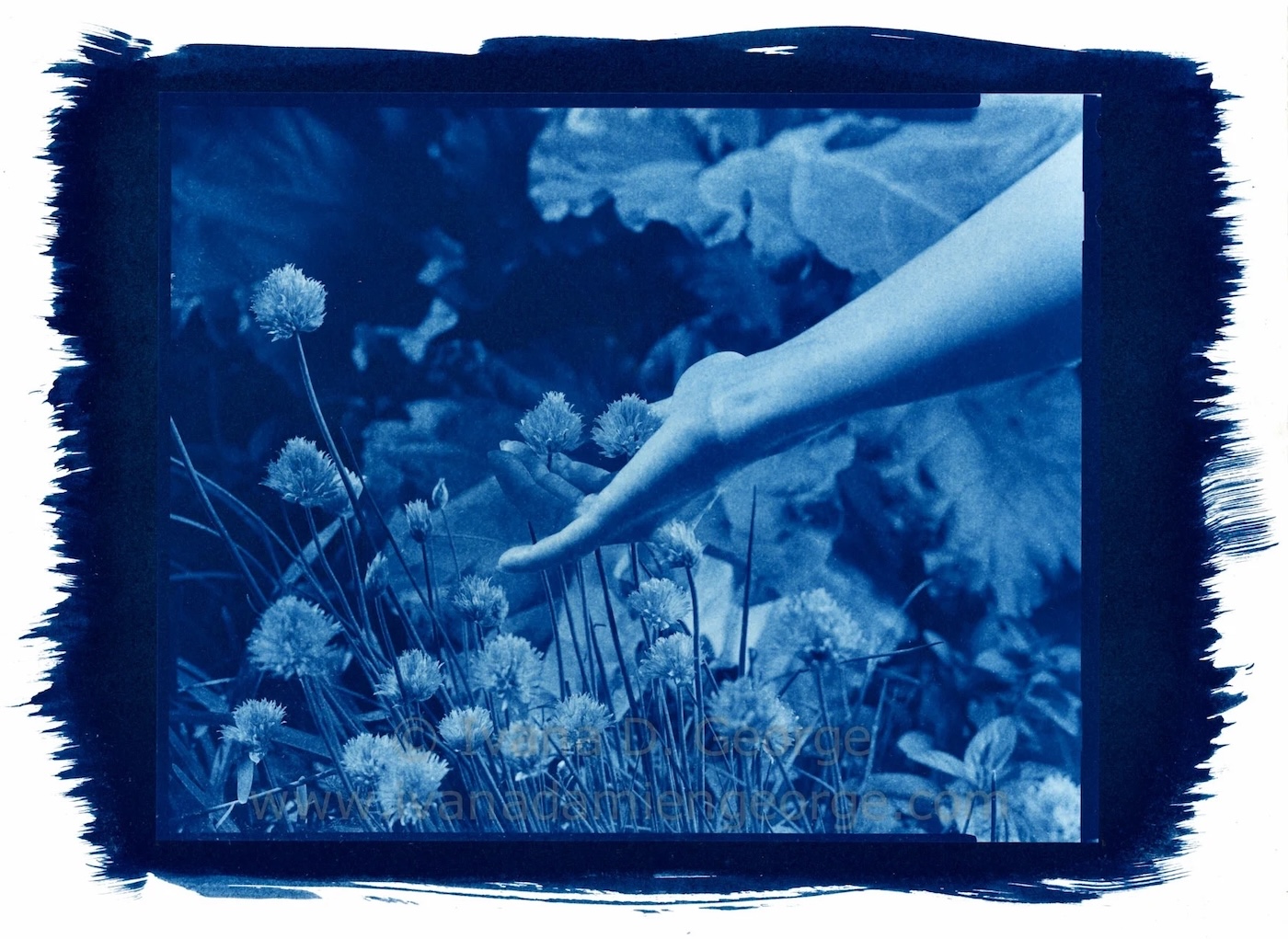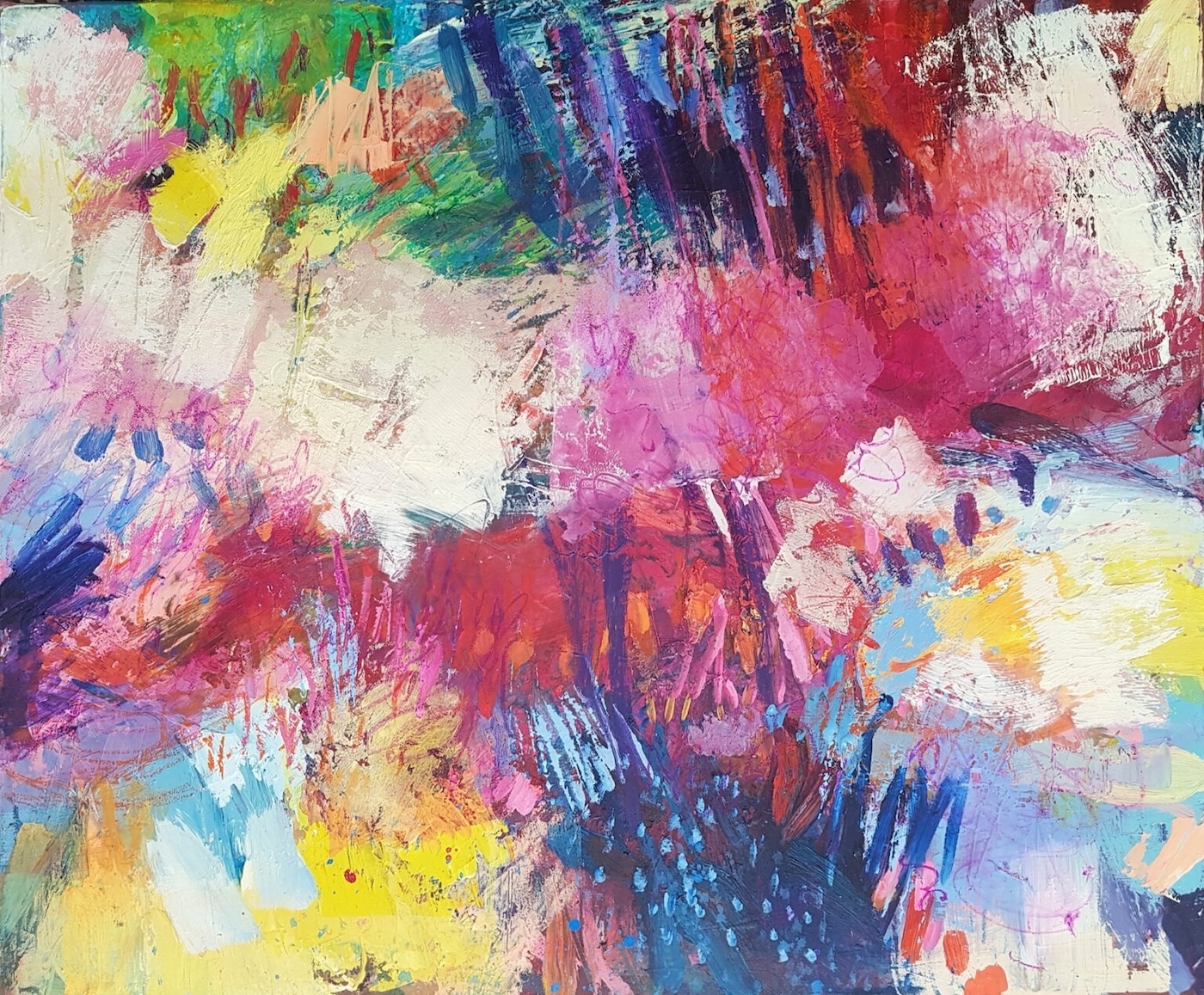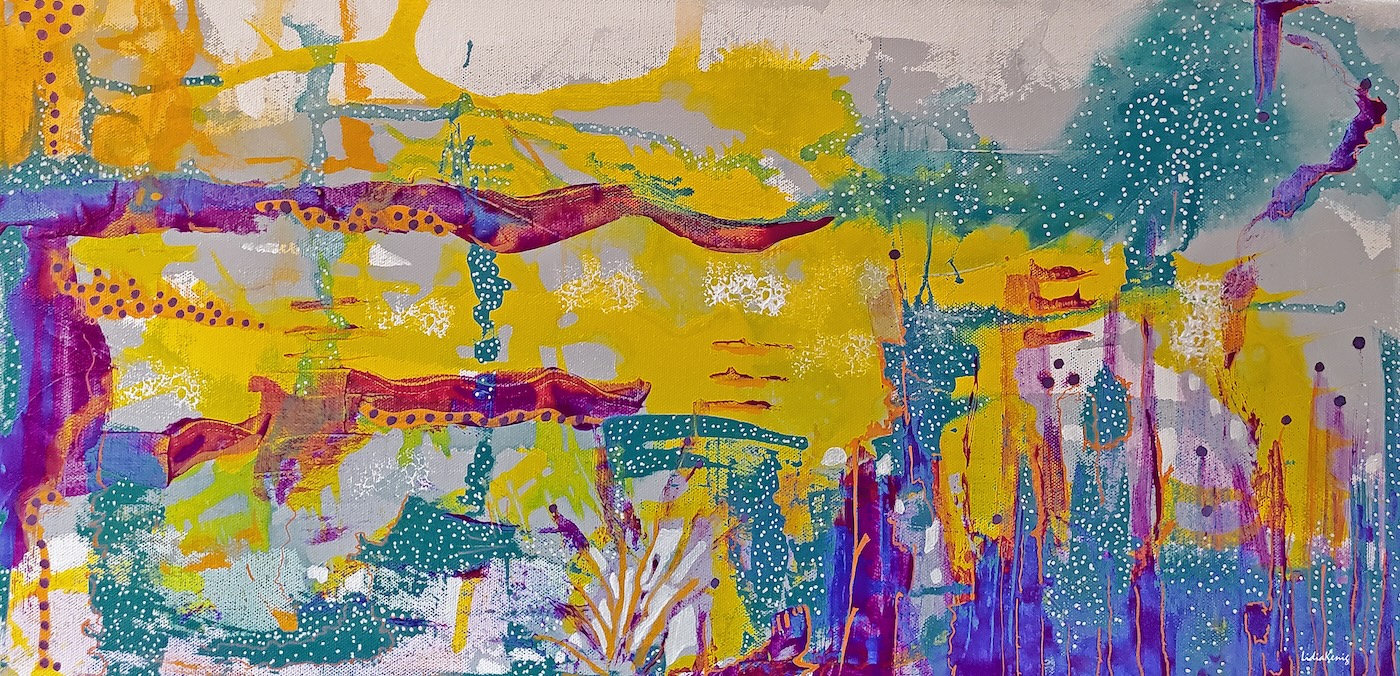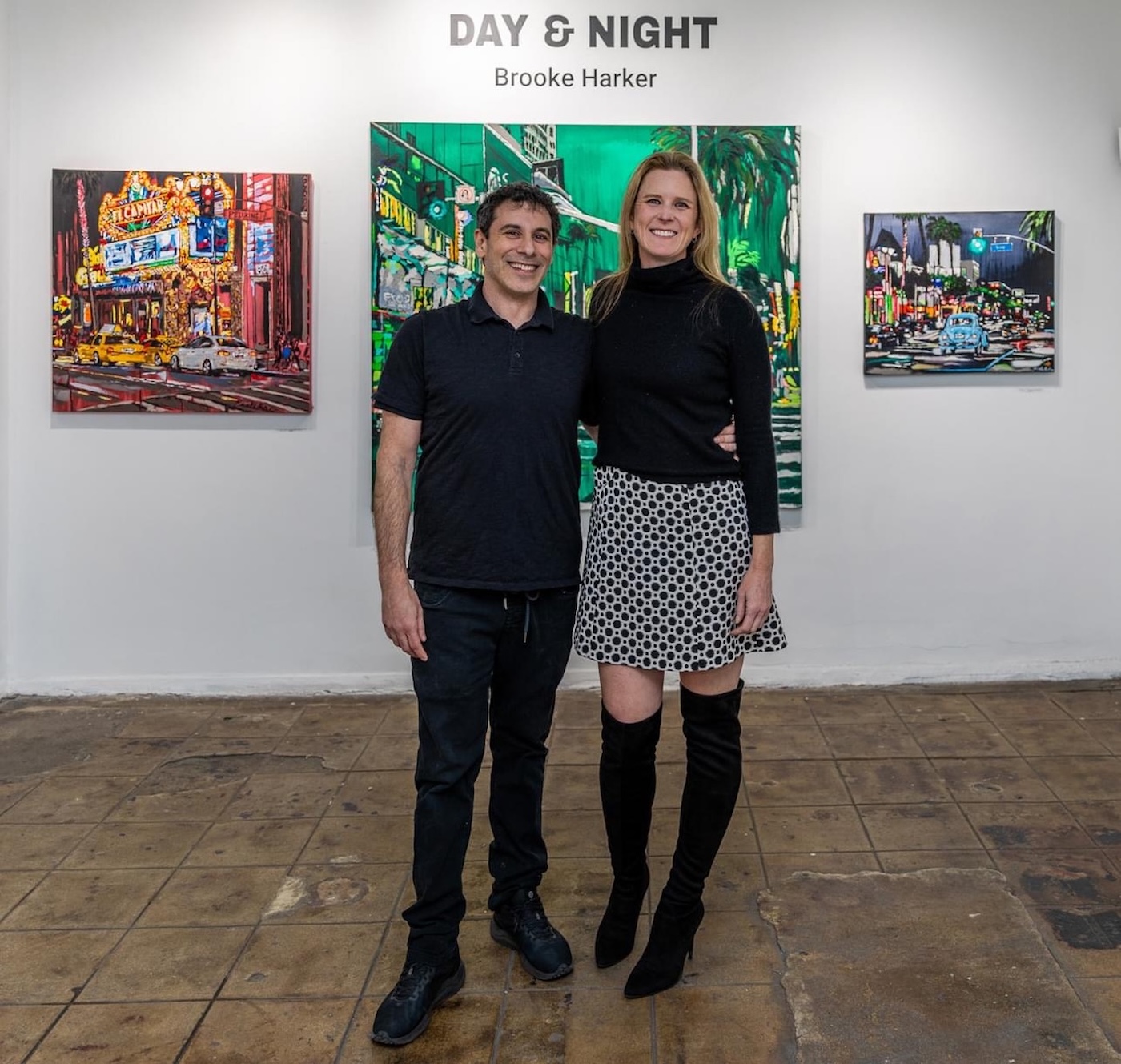
Mutual Respect Between Artists and Galleries with Katherine Hébert (244) 16 Oct 4:12 AM (6 days ago)
How can you establish a long-term profitable relationship with a gallery from the get-go?
When you hand over your work to a gallery, you’re trusting them with something deeply personal. You hope they’ll represent you well, that they’ll communicate clearly, and that they’ll sell your art with care.
But that kind of trust doesn’t just happen. It’s earned through mutual respect and consistent communication.
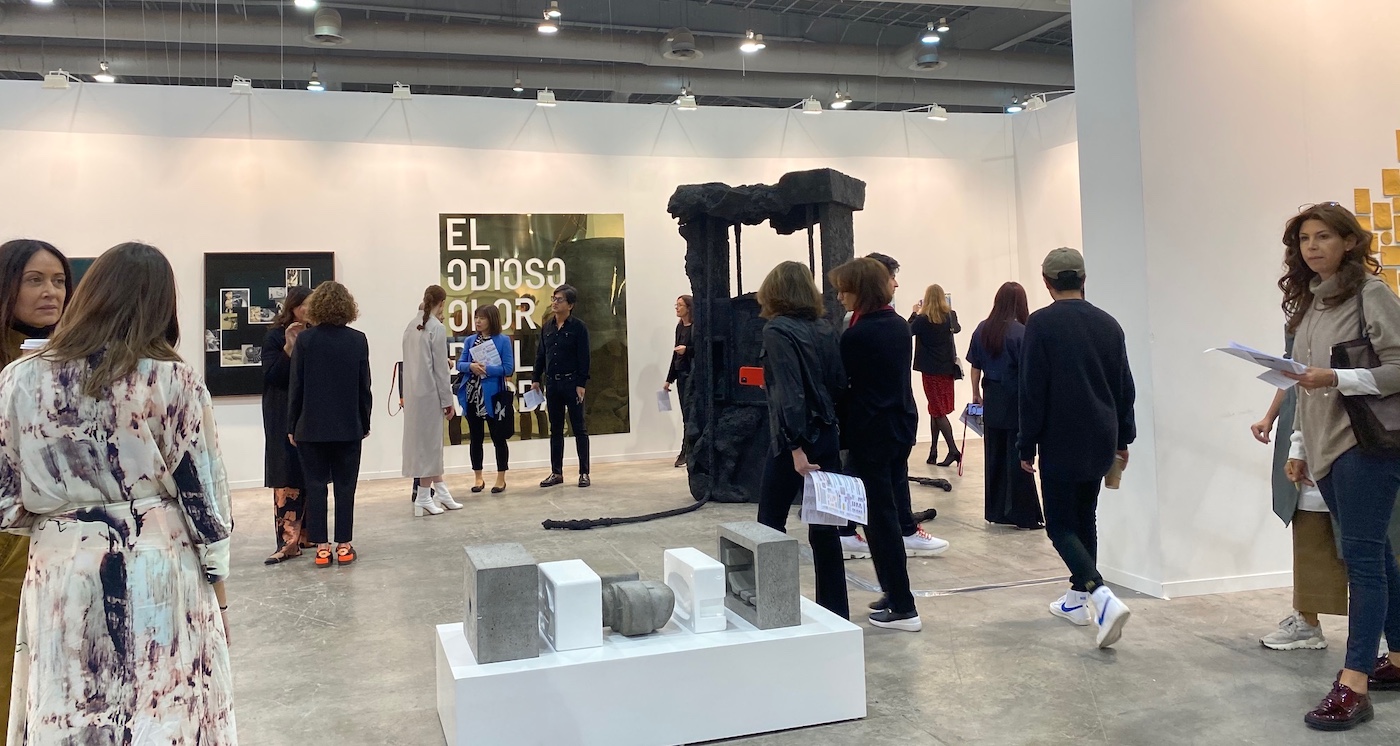
That’s what my guest, Katherine Hébert, and I talk about in this episode of The Art Biz. Katherine has a rare perspective, having worked closely with both artists and gallerists. She knows what happens when communication breaks down, and what it looks like when partnerships truly work.
The small and mid-size galleries she works with as a consultant and founder of Gallery Fuel are passionate about art and want to do right by the artists they represent. But passion alone isn’t enough to sustain a business or a relationship. Both sides need to show up professionally, communicate honestly, and understand what the other is trying to achieve.
In this conversation, you’ll discover:
- Why the “dating period” before gallery representation matters as much as the relationship itself.
- How to ask for regular quarterly check-ins without feeling pushy (and what to do if your gallery says no).
- The communication missteps that undermine trust on both sides, and how to avoid them.
- Why post-show reviews strengthen partnerships more than any other touchpoint.
- What galleries wish artists understood about the stories they have to tell every day.
- How younger collectors are changing what galleries need from their artists.
This isn’t just about fixing broken relationships. It’s about building ones that actually work from day one—with clear expectations, mutual goals, and the kind of collaboration that helps both your careers grow.
Whether you’re represented by a gallery, considering your first partnership, or wondering if it’s time to reset expectations in a current relationship, this episode will give you new ways to think about how you work with others.
Your art career will be stronger when mutual respect is at the center of every relationship.
Listen
If you’re working with a gallery, reach out and ask for a quarterly check-in. If you’re seeking representation, contact one gallery on your wishlist and ask a thoughtful question about their vision.
Strong partnerships are built through showing up, not just waiting to be chosen.
Katherine Hébert Quotes
“The gallery cannot exist without the artists. Just that alone should make an artist feel empowered.”
“I would not enter into a relationship as an artist with a gallery if there was not a contract. No way. Not in this day and age.”
“Make sure that that contract is mutually beneficial. It is in place to protect the artist as much as it is to protect the gallery.”
“To be successful, you need to understand each other’s goals. If you don’t discuss those things upfront, establishing trust is going to be much more difficult.”
“A power dynamic can develop when communication breaks down. It has to be a partnership—both sides working toward the same goals.”
“[The galleries] have two clients—their artists and their buyers. That’s a lot of narratives to manage every day.”
“The gallery can’t exist without the artists, and artists hold more power than they sometimes realize. Asking questions only proves your professionalism.”
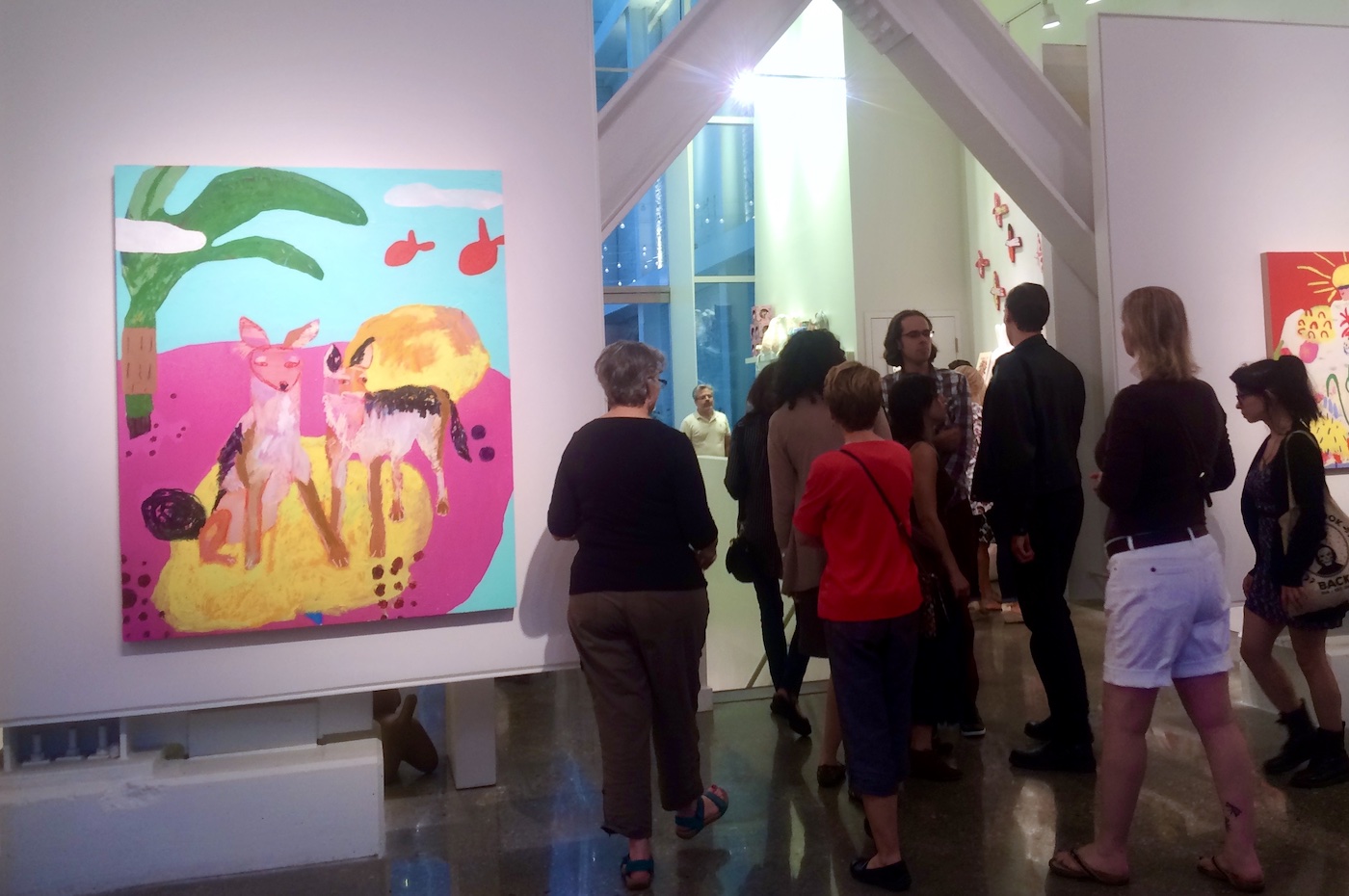
About Katherine Hébert
Katherine Hébert is the founder of Gallery Fuel, a membership-based resource helping small and mid-sized galleries attract collectors, boost sales, and run thriving businesses. Combining her art world experience with corporate marketing expertise, she offers a unique perspective on the challenges gallery professionals face today.
Before launching Gallery Fuel in 2012, Katherine worked across diverse gallery settings—from frame shops and limited-edition print dealers to galleries representing leading regional and national artists, as well as blue-chip works from the 19th and 20th centuries.
Follow Katherine on Instagram: @galleryfuel
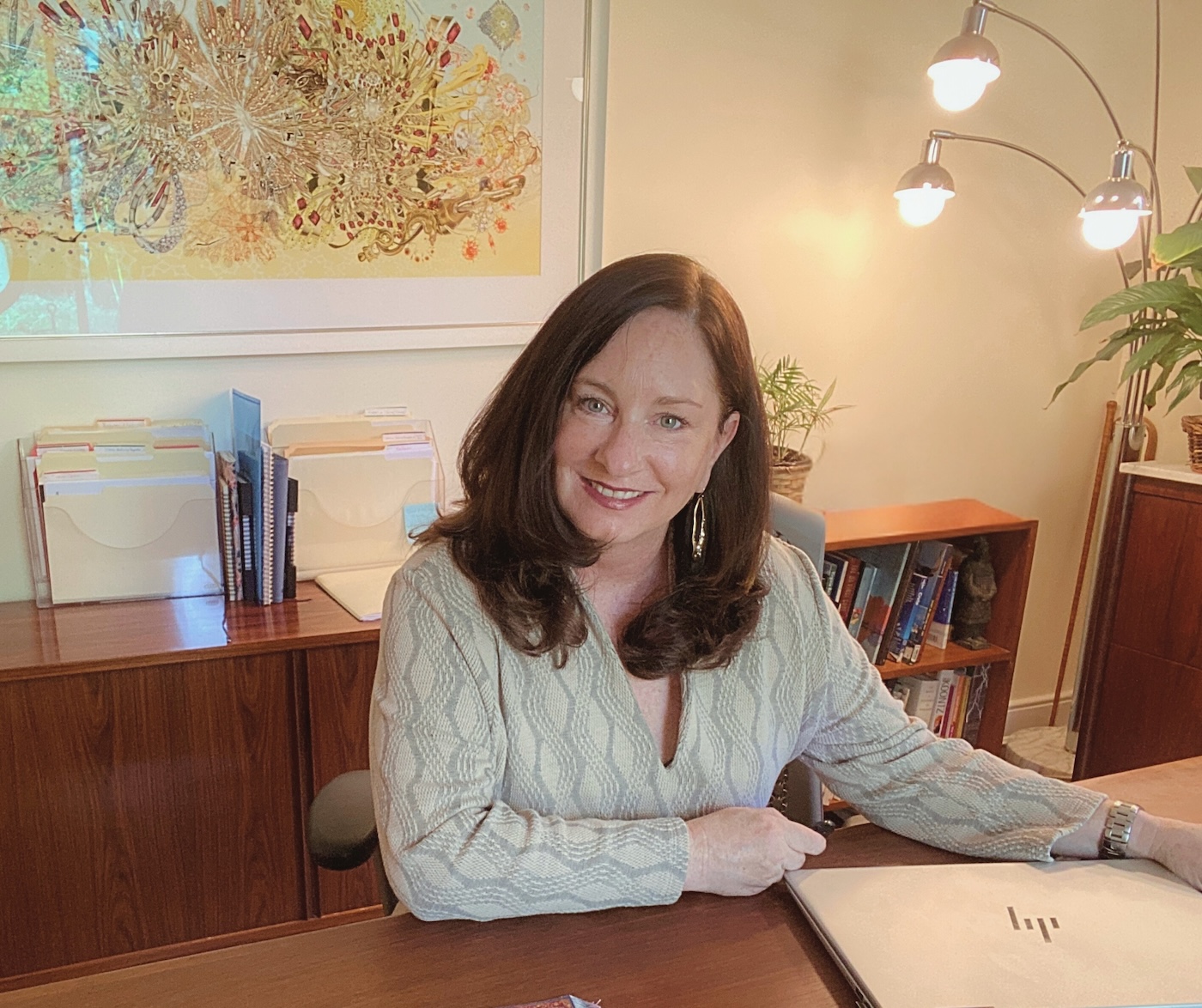
The post Mutual Respect Between Artists and Galleries with Katherine Hébert (244) appeared first on Art Biz Success.
What to Do With 400 Paintings: Artist Legacy and Economic Reality with Alissa Quart (243) 9 Oct 3:43 AM (13 days ago)
Families reach out to me regularly about what to do with an artist’s work after they’ve passed. It’s a conversation most artists avoid having, which leaves loved ones guessing about what matters and what doesn’t.
Alissa Quart didn’t have that luxury. When her 90-year-old mother Barbara Quart received a terminal diagnosis in March 2025, they had to act quickly.
Barbara had spent 30 years painting almost daily, creating works influenced by Richard Diebenkorn, Alice Neel, and Claude Monet. She’d never been part of the gallery system or an MFA program. She just followed her vision.
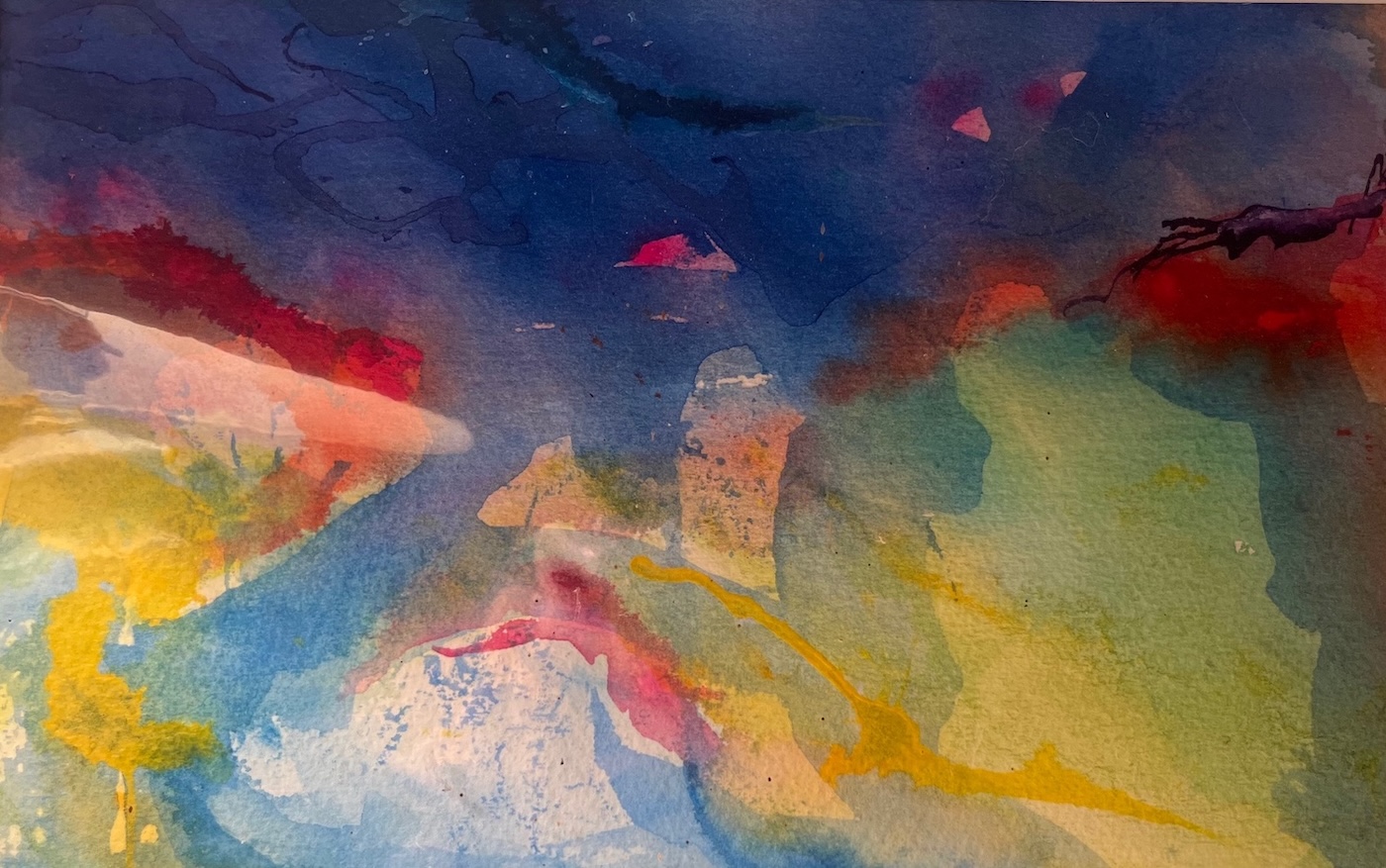
Alissa’s solution for rehoming 400 paintings was practical and radical. She started giving paintings away and selling them at accessible prices to people in her building, her mother’s neighbors in the Berkshires, even the person who cleaned out the house.
The goal was simple: place the art with people who would cherish it, in places where Alissa could still see her mother’s work.
Then she wrote about it in the New York Times and everything changed. Within days, she received over 300 requests to buy paintings. Art professors and professional painters reached out to say Barbara’s work was genuinely good.
At 90, Barbara finally got validation for all of her hard work.
But our conversation goes beyond one family’s story. We dig into what artists actually need to thrive. Barbara could paint for three decades because she had rent-controlled housing, an affordable studio nearby, and a community of artists who shaped her thinking. Those circumstances are nearly impossible to replicate today.
This conversation will shift how you think about legacy, community, and what it takes to sustain a creative practice over time.
Listen
Update from Alissa
With the crucial help of librarian Kira Smith, I have created a catalogue of her paintings, so that people who are interested in acquiring one can now do so. I am excited about this moment.
We have decided to charge from $500 to $1,200 for different pieces. (If you are economically struggling and can explain your situation to me, we can talk about pricing further.) One of my goals is to find appreciative homes.
The list has clickable links so that you can view each painting—just click on the link for “Image.” Once you have decided on a painting, please email me and we’ll send you the billing and estimated shipping info (it’s an easy process).
Have one honest conversation about your art with someone who might inherit it or help place it after you are no longer able to do so.
Alissa Quart Quotes
“Artists need to be in community to make really good work and to influence each other. And then they also need to do it for a long time… You need the worker ants not just the queen bees.”
“Some of the stigma of selling in community, not going through the gallery system, has to change.”
I’m trying to honor my mom, but at some point, I am feeling like, is this, is this necessary? Do I need to do this? … when do you stop building somebody’s legacy?”
“It’s not really only about the artist or the author, it’s about the world in which they are communicating.”
“Painting is the promise that our consciousness can persist beyond the hand that picked up the brush.”
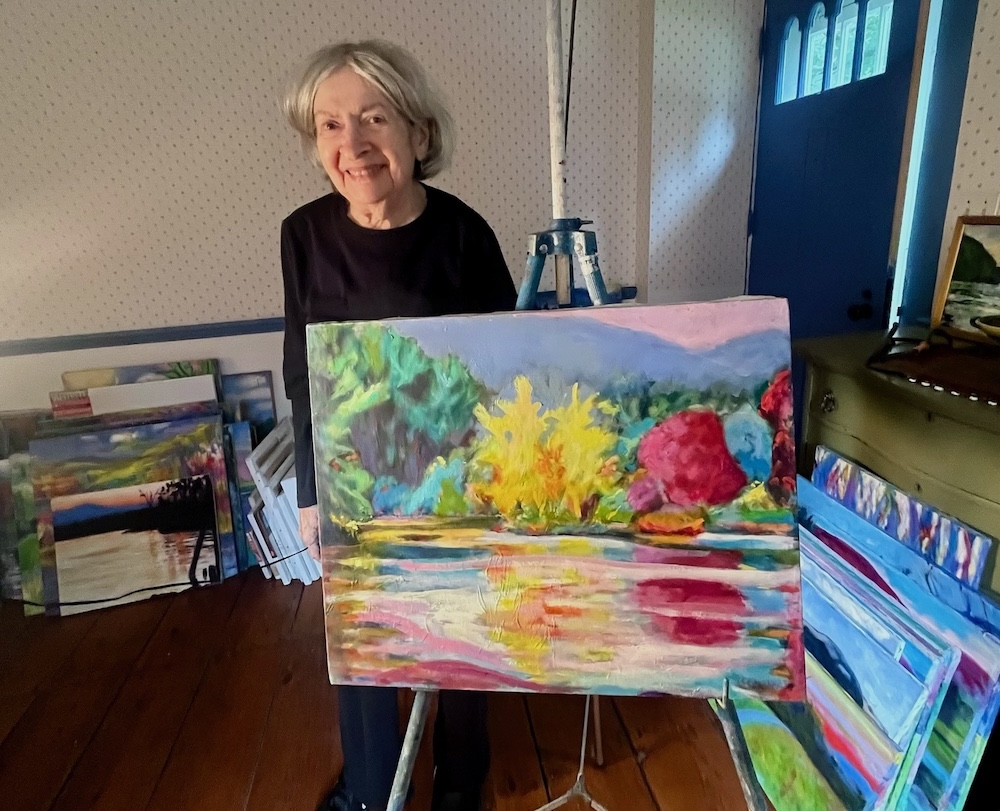
Mentioned
The Slip by Prudence Pfifer
The Death of the Artist by William Deresiewicz
Peter Hastings Falk, art historian
Alissa’s article in the New York Times: “My Mother, the Artist, Discovered at 90”
About Alissa Quart
Alissa Quart is the author of five acclaimed books of nonfiction including her most recent, Bootstrapped: Liberating Ourselves from the American Dream. She also wrote two books of poetry has written for many publications including The Washington Post, The New York Times, and TIME.
Alissa is the Executive Director of the non-profit Economic Hardship Reporting Project. Her honors include an Emmy, an SPJ award and a Nieman fellowship. She lives with her family in Brooklyn.
Follow Alissa on Instagram: @alissaquart
And follow Barbara’s paintings: @barbaraquartpainter

The post What to Do With 400 Paintings: Artist Legacy and Economic Reality with Alissa Quart (243) appeared first on Art Biz Success.
Community, Kinship, and Career Stability with Malene Barnett (242) 2 Oct 3:22 AM (20 days ago)
When artist Malene Barnett discovered that enslaved Caribbean women once created and sold pottery to sustain their families, and in rare cases, purchase their freedom, clay became more than a medium. It became a way to honor those who survived.
This connection between material and memory drives Barnett’s entire practice. Working across textiles, ceramics, and rugs, she transforms her Caribbean and West African heritage into art you can touch, use, and live with.
Each piece doesn’t just reference ancestry; it continues a conversation with it.
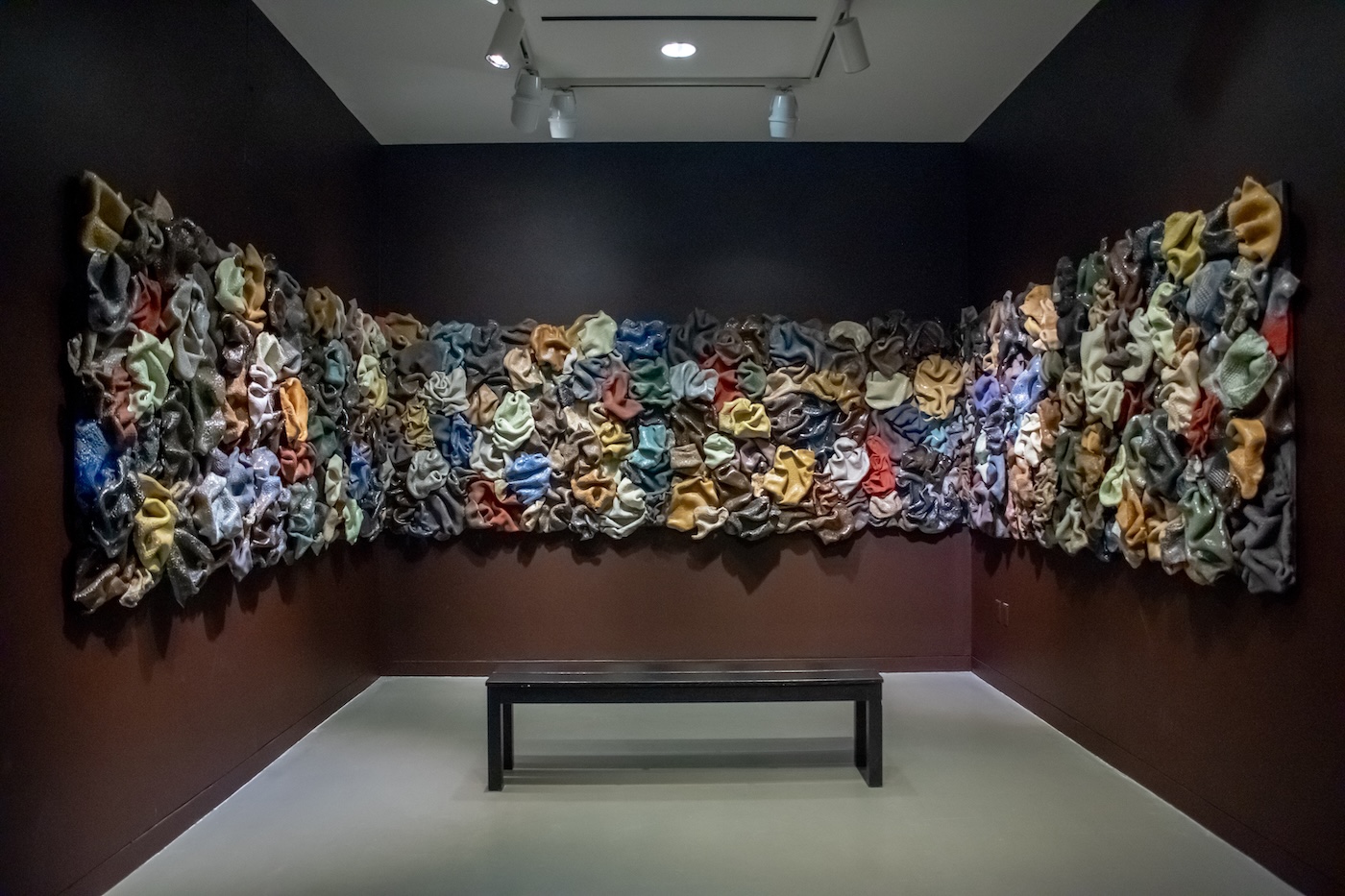
But Barnett refuses to be confined to one medium.
Clay demands patience—weeks of drying, hours in the kiln—so she fills the waiting with photography, printmaking, and video work. It’s not restlessness, it’s rhythm. Each medium operates on its own timeline, and she’s learned to orchestrate them.
She’s also uninterested in the gallery pedestal. Instead of isolated objects behind glass, Barnett creates immersive environments where textiles, ceramics, and imagery converge. Her installations invite you into a world shaped by the objects she crafts.
That same expansiveness defines how she moves through the art world. In 2018, she founded the Black Artists and Designers Guild, building the support network she wished existed when she was starting out. Her 2023 book, Crafted Kinship, profiles over 60 artists of Caribbean heritage, the resource she searched for in graduate school and couldn’t find, so she made it herself.
Her advice to emerging artists is deceptively simple: build enough stability that your creativity has room to breathe. And then, no matter what, keep making.
Listen
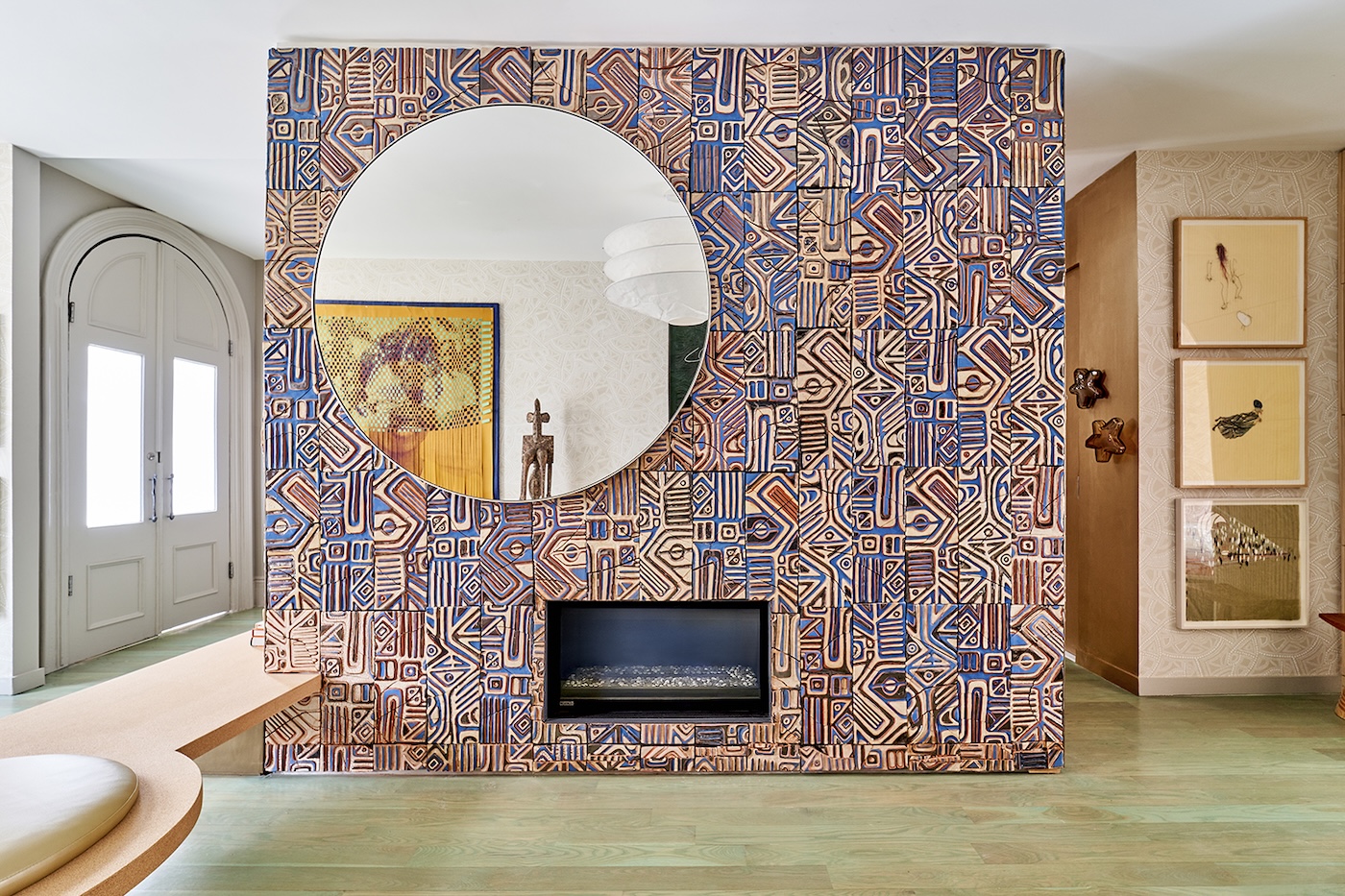
Follow Malene’s lead and show your process. A simple sketch or test piece is enough to start a conversation.
Malene Barnett Quotes
“I made a pact with myself early on that whatever I create would be grounded in my ancestry and identity.”
“Clay is not just material. It’s a tool for liberation.”
“In the Caribbean, enslaved women used clay pots not only to nourish families but also to buy freedom.”
“I don’t want to be defined by one medium. I am multidisciplinary.”
“I’m more interested in creating environments than in showing one-off pieces on a pedestal.”
“You don’t have to wait for a finished piece to share. Share your process—the tools, the research, the works-in-progress.”
“Community is central to everything I do.”
“The good things are coming. They’re already planned, so you don’t have to worry. Just keep making.”
About Malene Barnett
Malene Djenaba Barnett is an award-winning multidisciplinary artist, textile surface designer, and community builder. She holds an MFA in ceramics from Tyler School of Art and Architecture and undergraduate degrees in fashion illustration and textile surface design from the Fashion Institute of Technology. In 2022–23, she received a Fulbright Award to serve as visiting artist at Edna Manley College of the Visual and Performing Arts in Kingston, Jamaica.
Malene is the founder of the Black Artists + Designers Guild, which supports independent Black makers globally. When she’s not traveling the world researching Black diasporic aesthetics, she’s based in Brooklyn, New York.
Follow Malene on Instagram: @malene.barnett
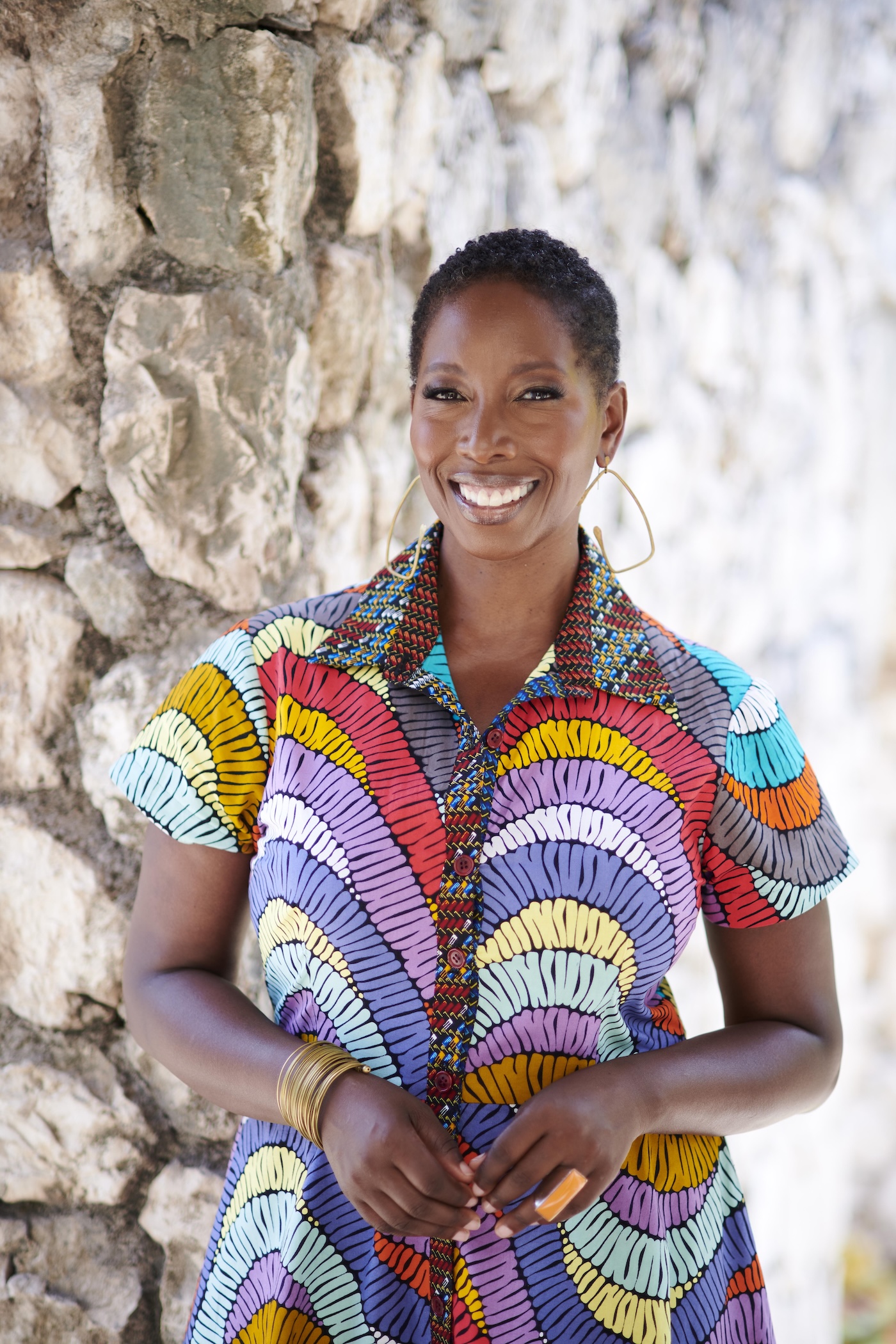
The post Community, Kinship, and Career Stability with Malene Barnett (242) appeared first on Art Biz Success.
Maybe It’s Time to Rethink Pinterest with Hayley Price (241) 25 Sep 3:41 AM (27 days ago)
Pinterest might not be the first place you think of when it comes to marketing your art. But if you’ve been dismissing it as a platform for recipes and home décor, it may be time to look again.
In this episode of The Art Biz, I talk with Hayley Price—artist, founder of an online gallery, coach, and host of The Art Coaching Club podcast—about how Pinterest can quietly but powerfully support your art career.
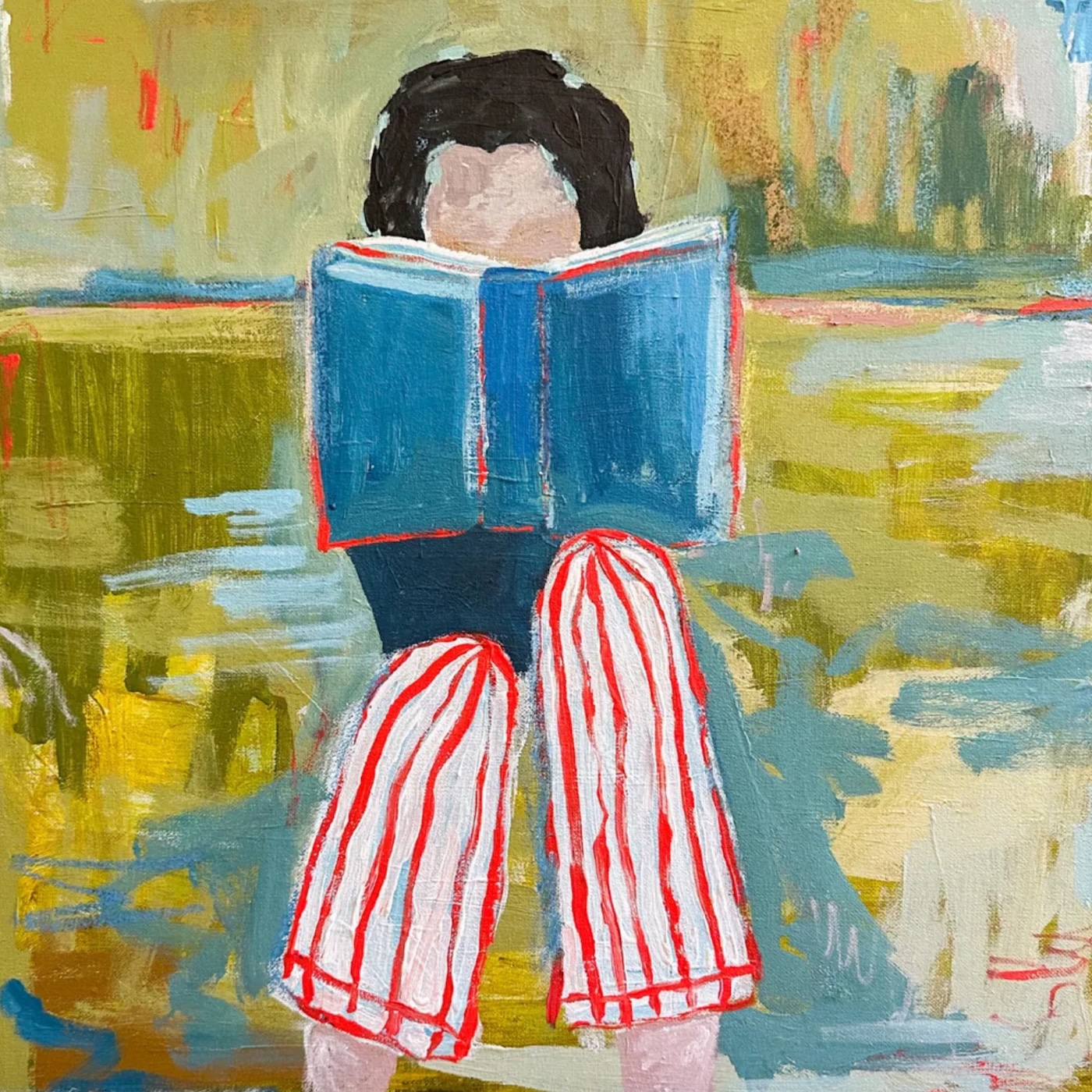
Unlike Instagram, Pinterest isn’t a social platform. It functions more like a search engine.
That distinction matters because your pins don’t vanish in a crowded feed—they’re searchable, discoverable, and relevant long after you post. A single pin can continue bringing people to your site for months or even years. Hayley sees this firsthand: more than 40% of her gallery’s traffic still comes from pins created years ago.
Pinterest also works hand in hand with search engine optimization. Blog posts can be repurposed into multiple pins that point back to your site, multiplying the chances for someone to find your work. And because pins are easy to share and save, your content keeps circulating without you having to constantly show up.
If you’re new to the platform, Hayley suggests starting small:
-
- Set up a business account.
- Connect your Instagram so posts automatically flow into Pinterest.
- Create a few simple pins for your blogs, collections, or shop pages.
That’s it. You don’t need to create a complex strategy to start seeing results.
Pinterest may not be flashy, but it offers something even better: longevity. A pin created today could still be introducing new people to your art years from now. And that kind of lasting visibility is rare in today’s fast-moving online world.
Listen
Hayley Price Quotes
“Pinterest is a search engine, not a social media platform.”
“The shelf life of a pin is years. I still see traffic from pins I created six or seven years ago.”
“More than 40% of my gallery’s traffic comes from Pinterest—and much of that is from old pins.”
“If you’ve written a blog, you can turn it into 10 different pins and double your SEO power.”
“You don’t need to be on Pinterest every day. You can set it, forget it, and it still works for you.”
“If a piece sells, don’t delete the pin. ust update the link so people stay in your world.”
“Even a small ad spend goes further on Pinterest than on Instagram, and the pins keep working after the campaign ends.”
“Pinterest can be a mood board. I use it to gather colors, textures, and design inspiration for my own creativity.”
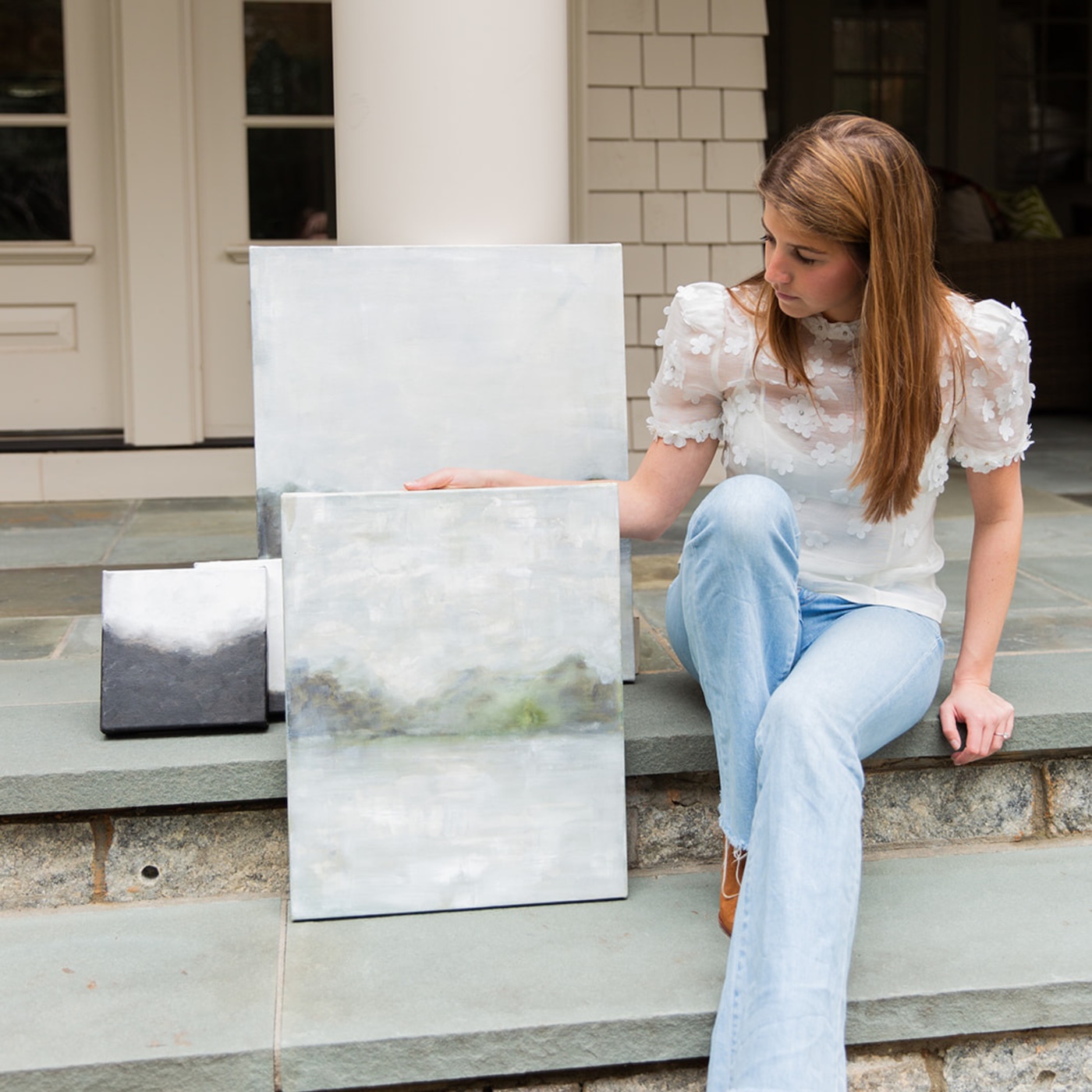
About Hayley Price
Hayley Price is a dedicated advocate and mentor for artists at every stage of their careers. With a rich educational background as a Studio Art and Business double major from Washington & Lee University, Hayley possesses a deep understanding of both the creative and commercial challenges artists face in the ever-changing landscape of today’s art world.
Her journey has been shaped by a commitment to fostering growth, building relationships, and empowering artists to focus on their passion while she tackles the challenges that ultimately take them out of the studio.
Follow Hayley on Instagram: @theartcoachingclub
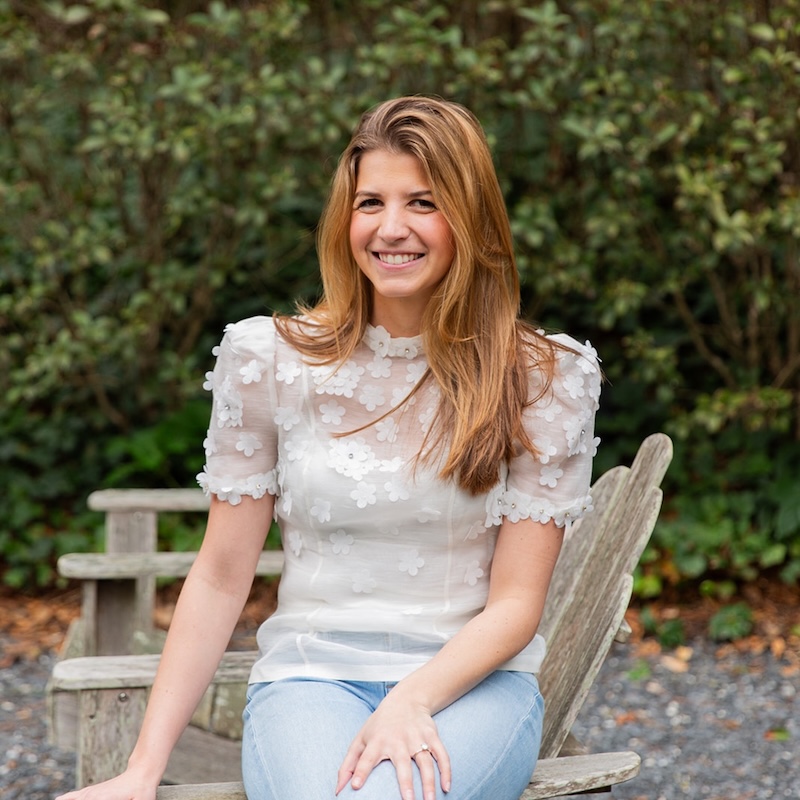
The post Maybe It’s Time to Rethink Pinterest with Hayley Price (241) appeared first on Art Biz Success.
Entrepreneurial Fatigue, Market Uncertainty, and the Case for Slowing Down with Katie Hunt (240) 18 Sep 3:54 AM (last month)
Katie Hunt’s 2025 State of the Product Industry survey results confirmed what I’ve been sensing in my own community: business is feeling heavier than usual.
Katie works with artists and makers who sell physical products, mostly in wholesaling. It’s a different business model than the fine artists I typically serve, but many of the underlying challenges are shared.
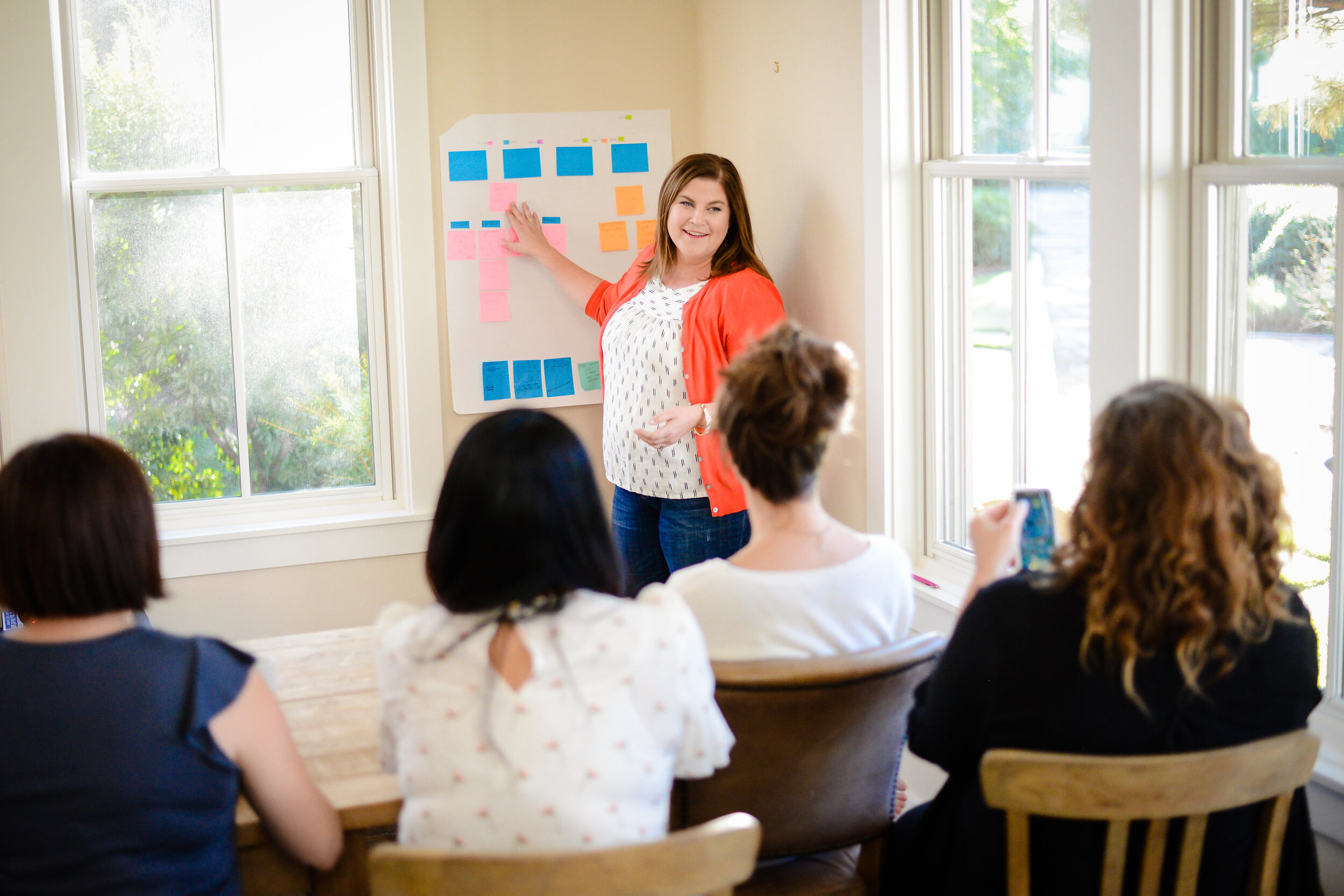
Artists are tired. They’re asking hard questions about what’s working, what’s not, and whether the way they’ve been operating is sustainable for the long haul.
One of the most revealing data points in Katie’s report is that 30% of product-based business owners had considered closing their business in the past six months. That’s a significant number.
It’s also a reminder that we rarely see the full picture online. Most of us are still conditioned to share the good news—the exhibitions, the sales, the fresh work coming out of the studio. We don’t always hear the quiet doubt or behind-the-scenes exhaustion.
Katie and I talked about what’s contributing to this burnout. For her community, tariffs have added another layer of financial stress, along with rising production costs and delayed shipping.
For others, it’s the mental fatigue of pitching again and again and not hearing anything back. It’s not always clear whether the silence means no, not right now, or nothing at all.
What stood out most in our conversation were the conditions that seem to support sustainability in creative businesses. They aren’t surprising, but they are often overlooked or postponed:
A streamlined, focused business model (instead of too many products, services, or offers)
Systems and tools that reduce decision fatigue
Trusted help—whether that’s a contractor, assistant, or peer support
I’ve seen this over and over again with my students and clients. The more complex their business becomes, the more energy goes toward maintenance and troubleshooting. What helps most is having the right tools, clear systems, and supportive people around you—so you’re not making every decision in isolation.
If you’re feeling stretched or uncertain, I hope this conversation reminds you to pause. You’re not doing anything wrong. The conditions really have changed. But there are still ways to steady yourself and move forward with more clarity and intention.
Listen
Are you spending more time reacting—or intentionally shaping your business around what matters most?
Katie Hunt Quotes
“Crossing that $100,000 in gross revenue appeared to be a really key milestone in business growth.”
“A simple business is a sustainable and profitable business.”
“As revenue and experience increased, hours worked actually dropped—but only with people that had people working under them and systems in place.”
“Most people aren’t making that amount of money, but if they do hit that mark, that’s where they saw a lot of acceleration.”
“Email marketing continuously ranks the highest in ROI. Yet 13% of businesses aren’t using it at all.”
“We need to focus on controlling the things that we can control.”
“I would say that people who responded to this survey are cautiously hopeful—but they’re also tired.”
“You’re making an impact with your art. Please continue to show up and spread that joy or make that impact through the things you’re doing.”
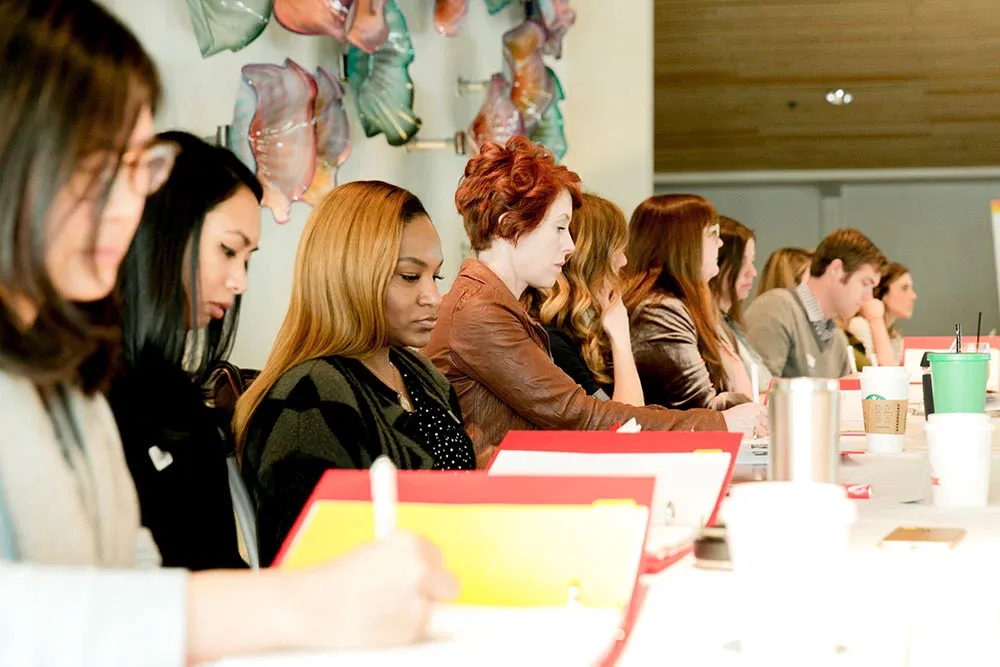
Mentioned
4 Considerations for Wholesaling Your Art with Katie Hunt (The Art Biz ep. 138)
2025 State of the Product Industry report
Proof to Product podcast ep. 390 How Trump’s Tariffs Are Affecting Small Business Owners with Emily Ley, Simplified®
About Katie Hunt
Katie Hunt is the founder of Proof to Product, a podcast host, a business strategist, and a mom to 4 budding entrepreneurs.
Since 2011, more than 35,000 brands have trusted Katie & Proof to Product to guide them in their wholesale journey.
You’ll find products from Paper Camp alumni stocked on the shelves of Target, Nordstrom, Container Store, Urban Outfitters, Selfridges, and boutiques around the world.
Whether you’re brand new to wholesale or you’ve been at it a while, she and the Proof to Product community will offer support and strategies to help you reach your goals faster.
Follow Katie on Instagram: @prooftoproduct
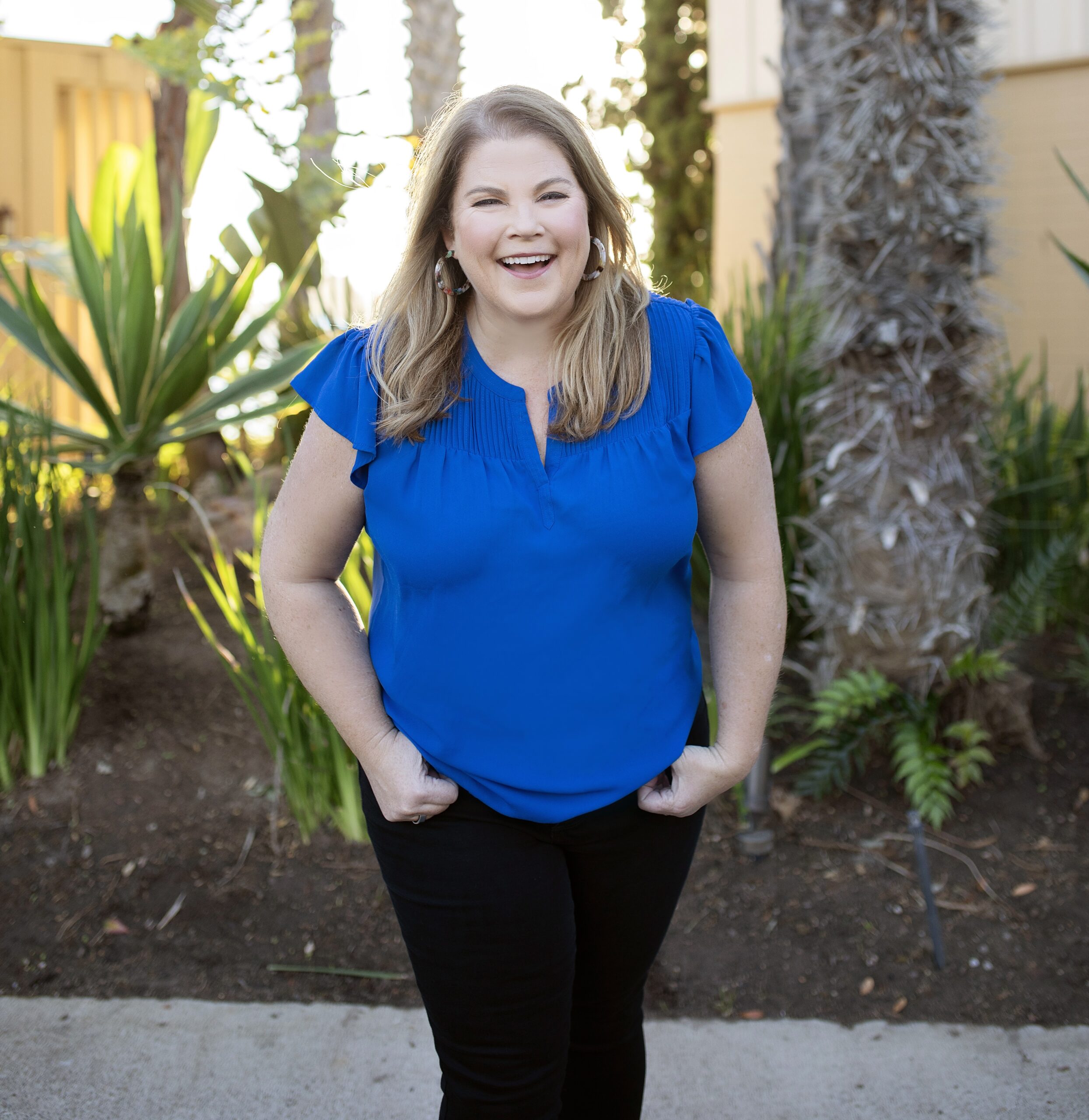
The post Entrepreneurial Fatigue, Market Uncertainty, and the Case for Slowing Down with Katie Hunt (240) appeared first on Art Biz Success.
Why Every Artist Needs a Brand Kit (239) 4 Sep 4:35 AM (last month)
Remember when the first step to looking professional as an artist was ordering business cards? That’s exactly what I did when I started out.
These days, I don’t even have current business cards, but I do have a strong brand identity, and that’s far more powerful.
You don’t need stacks of printed materials anymore. Your website, Instagram, and email list do most of the heavy lifting for your art business.
But whether digital or print, every marketing piece you create needs to send the same clear message. That’s where too many artists stumble.
The Problem with DIY Design
Here’s the tough love that I can only say after so many years of experience: most artists think they’re better designers than they really are.
Artists thrive on creative expression, which can lead to trying a new font for every postcard, experimenting with endless Canva templates, or switching colors on a whim. That’s creativity, but it’s not communication.
Designers focus on communicating a clear and consistent message. Without that, your materials end up looking scattered. One postcard looks nothing like your website. Your Instagram doesn’t match your emails. The result? Confusion for your audience and a lost opportunity to build trust.
Listen
Or listen and subscribe on your favorite app by searching The Art Biz with Alyson Stanfield.
Identity First
Before you start choosing fonts or colors, you need clarity about your identity as an artist, which is why this is developed over a long period of time alongside your art. Ask yourself:
- What story are you telling through your art?
- What kind of experience do you want people to have when they encounter your work?
- How do you want to be remembered?
When you’re clear about these things, design decisions become easier and more authentic. Skip this step, and no amount of design polish will save you.
The Solution: A Brand Kit
A brand kit is your shortcut to consistency. It holds your key design choices in one place:
- Fonts and colors
- Logo or wordmark
- Artist photos
- Templates for postcards, emails, or social posts
- Words and phrases that capture your essence
With a brand kit, you stop reinventing the wheel. Every touchpoint, from your website to a thank-you card, looks and feels like you.
Over time, that kind of consistency builds trust. It’s like showing up to every art opening wearing your signature hat: you’re instantly recognizable.
Build Your Brand Kit with Support
You don’t have to figure this out alone. Inside my Essentials program, we build your brand kit together.
I provide the framework, and you get feedback from me and a community of artists. It’s like a crit session but for your marketing (and friendlier). You’ll walk away with tools you can use again and again, saving time and energy for the studio.
Remember: identity first, then design, then consistency. That’s the path to a strong brand—one that helps your art stand out and makes it easier for collectors to remember you.
Learn more and join us inside Essentials.
Related Episodes
These episodes feature guests who have clarity about who they are as artists and what they want from their work:
The post Why Every Artist Needs a Brand Kit (239) appeared first on Art Biz Success.
You Don’t Need a Gallery, You Need Conscious Connections (238) 28 Aug 7:18 AM (last month)
Nobody seeking to run a profitable business can afford to wait to be discovered regardless of how good their product is. There’s simply too much noise and competition for attention in today’s world. We have to make our own opportunities.
For artists, that often means rethinking the belief that gallery representation will solve everything. Or that posting on Instagram every day will magically get you what you want.
Listen
Or listen and subscribe on your favorite app by searching The Art Biz with Alyson Stanfield.
What Are Conscious Connections?
Conscious connections aren’t transactional. They aren’t about “getting,” although they are often mutually beneficial. They are intentional relationships that help you achieve specific goals.
They go beyond casual acquaintances and require a deeper and more personal level of engagement and commitment. This is what they look like:
- A collector who bought from you years ago and still raves about your work, but hasn’t heard from you in a while.
- A realtor who commissions small works from you to give new homeowners, putting your art into dozens of homes.
- A podcaster looking for fresh stories. Your journey could be just what their audience needs to hear. (Ahem … )
- A young curator eager to build a resume. Supporting them now could mean exhibitions or introductions later.
These are conscious connections. Not casual contacts, but intentional relationships that expand your reach and open new doors.
Why They Matter
Back in episode 93 of The Art Biz, artist Michael Gadlin said: “You cannot be a one-person band and succeed in your art business.” He was sooooo right.
Conscious connections give you things that may be impossible to find on your own or that you didn’t even know you needed. Things like:
- Resources. Access to funding, expertise, materials, or venues.
- Opportunities. Calls for entry, residencies, or commissions you learn about before they go public.
- Momentum. Not shortcuts, but a network that helps you move faster.
- Knowledge. Staying connected helps you learn what’s happening in your medium, your community, or the art world at large.
- Sales. People who know you are far more likely to buy from you and to share your art with others.
- Collaboration. Partnerships with artists or organizations multiply your reach and introduce you to new audiences.
Conscious connections are the lifeblood of your career. They keep you visible, relevant, and supported in ways no single gallery or social media post can deliver.
Barriers to Connecting Consciously
If connections are so important, why don’t artists prioritize them? Maybe it’s:
- Fear. Reaching out feels awkward. There’s risk of rejection or worry about bothering people.
- Logistics. Geography or not knowing where to start.
- Avoidance. It’s easier to post on social media and feel like you’re making progress. Disorganization and overwhelm also get in the way.
The longer you delay your people work, the longer you delay results.
 To overcome these challenges, focus less on yourself and more on others.
To overcome these challenges, focus less on yourself and more on others.
Think about how connecting with them can enrich their lives as well as your own.
Who to Focus On
I wish I could wave a magic wand and hand you the perfect list of collectors waiting to buy your work. But it doesn’t work that way. And besides, it’s much more interesting and sustainable to build a network across a wide range of people.
In my Followers to Collectors workshop I share 31 categories of people to consider. Here’s the simplified version of four bigger buckets:
- Supporters. Past buyers, students, family, friends, and even your social media followers.
- Sellers and Venues. Gallerists, nonprofit directors, curators, interior designers, realtors, consultants—anyone who can buy, display, or recommend your art.
- Influencers. Writers, bloggers, critics, politicians, business leaders, clergy, board members, or local entrepreneurs.
- Peripheral Potential. Parents at your kids’ school, members of your congregation, coworkers, niche-market colleagues, even the barista or hairdresser you see regularly. Karen L. Fingerman coined a term for them: “consequential strangers” and they can be powerful bridges to new audiences.
Framing your network this way keeps it simple and actionable. Instead of chasing everyone, focus on one bucket at a time and deepen those relationships.
Take Action
This is an ongoing process, not a race.
To begin, pick one relationship to nurture this week — one note, one call, one reconnection. That small step is enough to keep momentum going.
Conscious connections aren’t optional. They are the foundation of a thriving art career — more reliable than a gallery, more enduring than an Instagram post. These are the people unique to you. Nobody else could create the same list.
And if you’re ready to see how those conscious connections fit into the journey from follower to fan to collector, please join me for the Followers to Collectors Planning Workshop on September 9–10. We’ll map out how people discover your art, how you build trust, and how you turn casual interest into lasting patronage.
Don’t wait for a gallery to make things happen. Build your own ecosystem of conscious connections. When you nurture them, opportunities multiply.
The post You Don’t Need a Gallery, You Need Conscious Connections (238) appeared first on Art Biz Success.
Remove Barriers to Buying Your Art (237) 21 Aug 4:12 AM (2 months ago)
When someone is ready to buy your art, the last thing you want to do is make them jump through hoops.
Yet too often, that’s exactly what happens: a broken link, missing prices, or a confusing checkout process that sends eager buyers away empty-handed.
In this week’s episode of The Art Biz, I dig into the places where friction shows up and how to remove it. Because while you can’t control the economy, trends, or even the weather, you can control how easy—or difficult—it is for someone to give you money for your art.
Buying Barriers Create Doubt
Anyone who has sold directly to a collector knows that collectors are buying into you as an artist. They’re not just buying art.
[ James Corwin discusses this and how he thinks of collectors as family in episode 232 of The Art Biz. ]
This is why once someone is ready to buy, your systems have to support that decision without delay.
Relationships and trust take time, but the mechanics of making a purchase should be immediate and obvious. Every unnecessary click plants a seed of doubt. Every missing detail or unanswered question is a chance for someone to close the tab and move on.
Barriers pop up everywhere: on websites, in emails, even on wall labels and QR codes. Your job is to spot those barriers and clear them away.
Listen
Or listen and subscribe on your favorite app by searching The Art Biz with Alyson Stanfield.
Three Keys to a Seamless Buying Experience
1. Clarity
People need a clear path to purchase. If your homepage is a dead end or sizes and prices are too hard to find, you’ve already lost momentum.
Make sure every finished piece—whether on a wall label, on your website, or in a social media post—is seen with a full credit line so potential buyers can picture it in their lives.
[ See Checklist for Crediting Your Art ]
2. Ease
Once someone decides they want your art, the process should feel seamless.
Offer straightforward payment options, professional communication, and timely delivery. Payment plans can help, but be smart about how you structure them to protect both you and the buyer. This means:
- You draw up a written agreement outlining details and signed by both parties.
- You limit the duration of payments to a tight window, hopefully within 6 months.
- You don’t turn over the artwork until the final payment is made.
3. Trust
Buying art is a vulnerable decision because it’s as personal to the buyer as it is to you.
People want to feel safe with their investment. Be transparent about policies, respond quickly, and follow up after the sale. Consistency and clarity build the kind of confidence that turns first-time buyers into loyal collectors.
Put yourself in the shoes of a stranger who just discovered your work. Try to buy a piece from yourself. Where do you land? How clear are the steps?
Write down every point of friction in the buying process—and commit to fixing at least one major barrier this week.
Related Topics
This episode is part of a series leading into my Followers to Collectors planning workshop on September 9–10. In the workshop, we’ll map the entire journey that transforms casual followers into committed collectors. We’ll talk not just about the buying process, but also about building relationships, showing up consistently, and creating trust over time.
Because making the sale is only one part of a bigger picture: the ongoing connection between you and the people who love your art.
See also:
The post Remove Barriers to Buying Your Art (237) appeared first on Art Biz Success.
Deliver Happiness at Your Art Openings 20 Aug 2:10 PM (2 months ago)
At your opening, it isn’t only your art that’s on display—you are, too. And as the artist, you are a host of the event.
Even if the gallery or venue sends the invitations and pours the wine, people are showing up because of you and your art. That makes them your guests. They’ve taken time out of their lives, navigated traffic, and chosen your event over countless other options. Your job—as the host—is to make them feel welcome, comfortable, and appreciated.
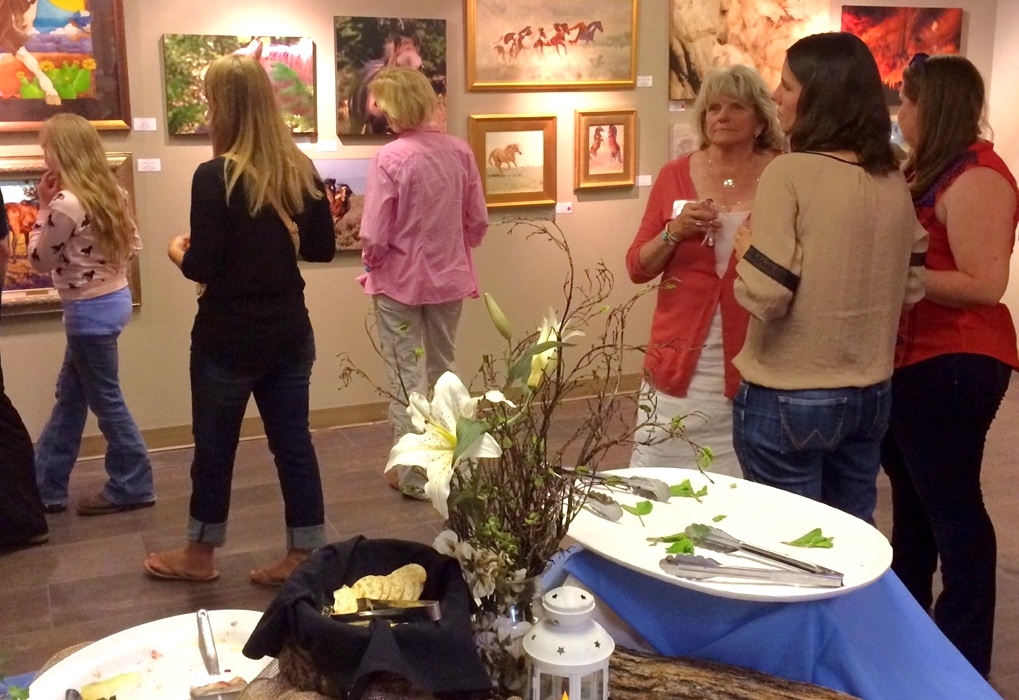
Openings can be awkward for everyone. Guests don’t always know what to say or where to stand. And for artists, the spotlight can feel overwhelming. But with a little intention, you can ease that tension and create an experience people will remember fondly.
The late Tony Hsieh, founder of Zappos, wrote about this idea in his bestselling book Delivering Happiness. He was talking about customer service, but the title applies just as well to art openings. You’re not only presenting your work—you’re delivering happiness through the way you treat people.
Here are eight ways to do that.
Help Them Get There Stress-Free
Don’t assume everyone knows where to park or how to find the entrance.
A quick note in your invitation or reminder email can ease frustrations before they start. Share parking tips, warn about construction, and point out landmarks that will help them feel confident walking through the door.
Good hosts think about the experience from beginning to end—and that starts before guests even arrive.
Set the Scene
Details matter.
Check that restrooms are clean and easy to find. Make sure there’s a coat rack or designated spot for jackets and bags. If you expect a crowd, add extra seating.
Even if the gallery staff normally handles these things, no one cares more about your guests than you do. Create a simple table display for your promotional materials—business cards, postcards, or even a notebook with details about your work.
That extra effort signals that you’re taking your role as host seriously.
Be Early, Not Fashionably Late
If your opening starts at 6:00, you should be ready to greet people by 5:45. No guests should arrive before you.
As a host, your presence sets the tone. Showing up early ensures you’re calm, prepared, and available to welcome your first arrivals with genuine attention.
Greet and Be Seen
Wear a name tag. Smile. Make the effort to circulate.
You must be seen.
You can’t stand by the door all evening, so ask a friend or family member to act as greeter.
Once you’re mingling, focus on remembering names—say them out loud when you meet someone and repeat them to yourself silently. That extra step goes a long way.
Being a host means making people feel seen and acknowledged, even in small ways.
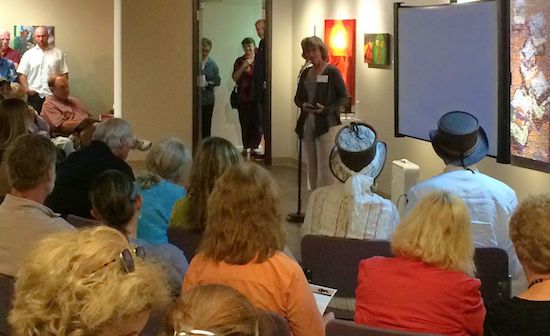
Connect People to Each Other
You’re likely the only person in the room who knows everyone. Use that to your guests’ advantage.
Introduce people with something they share in common: “Maria, this is James. You both love plein air painting.”
These small gestures help your guests feel more comfortable and make your event more dynamic.
Hosts don’t just welcome guests—they help them feel like they belong.
Teetotal It
You’re the star of the evening.
Stay sharp, composed, and approachable. A single glass of wine (or none at all) keeps you present.
Remember: no one wants to buy art from an artist who seems tipsy—or worse, spills on them. A gracious host always stays in control.
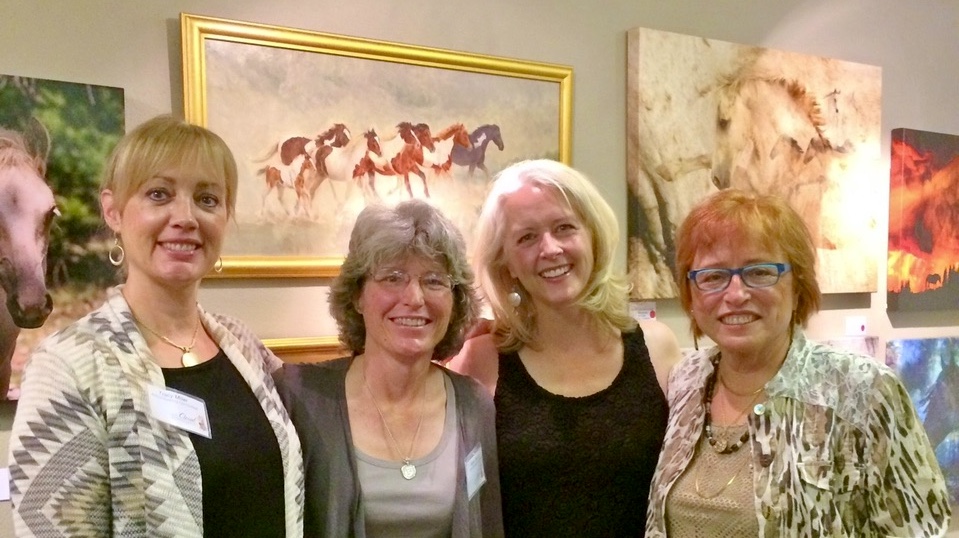
Stay the Entire Time
Whether it’s a solo exhibition or group show, you owe it to your audience (and your venue) to be present for the duration.
Guests may plan their evening around arriving later, and they’ll be disappointed if you’ve already left.
Surprise Them With a Gift
If the scale of the event allows, consider sending guests home with a small token—a postcard set, a notecard, or even a modest print.
Not only does this make them feel appreciated, but it also puts your work into more hands, extending the memory of the evening.
Delivering happiness isn’t about grand gestures.
It’s about the small, thoughtful details that make people feel welcome and cared for.
When you do that, your art isn’t just something to look at—it becomes part of an experience they’ll remember fondly and talk about long after the show closes.
This article was first published on August 4, 2014 and has been updated with original comments intact.
The post Deliver Happiness at Your Art Openings appeared first on Art Biz Success.
Clean Your Email List to Improve Deliverability and Engagement (236) 14 Aug 4:15 AM (2 months ago)
Most artists aren’t thinking about email list hygiene.
It’s not a shiny topic, and it’s definitely not sexy.
But if you’re emailing your audience from an email marketing platform (as you should be), cleaning your list can make a huge difference in how many people actually see your messages—and in how confident you feel when you send them.
I like to think of list cleaning like spinach: You might not be excited about it, but you know it’s good for you.
Removing people from your list can feel uncomfortable. But deep down, you probably already know they aren’t engaging. They’re not opening. They’ve moved on. And you don’t really want to keep emailing people who no longer want to hear from you.
This isn’t just about deliverability. It’s about clarity, sustainability, and respect—for your work and your audience.
Listen
Or listen and subscribe on your favorite app by searching The Art Biz with Alyson Stanfield.
It's Not About Numbers - It's About Connection
We all fall into the trap of wanting a bigger list. But I promise—a smaller list of warm, engaged subscribers is far more powerful than a large list of people who never open your emails.
It might feel counterintuitive to remove people you worked hard to attract, but when you do, something shifts. You stop writing to a silent room. You stop guessing. And you start communicating with more clarity and confidence.
Think of your list like a party.
Would you rather host 50 people who stay to themselves, or 15 who are genuinely excited to be there and connect with other guests?
That’s the difference between a bloated list and a healthy one.
When your list is full of people who want to hear from you, everything gets easier—writing, planning, and even selling. It’s more fun. It’s more rewarding. And it’s more sustainable.
Cleaning your list is a thoughtful act. It shows that you value your audience’s time and attention—and that you’re committed to showing up for the people who care.
Why You Need To Clean Your Email List
Your email list is one of your most valuable marketing assets. These are people who asked to hear from you. But over time, things change.
People lose interest. They get a new email address. They sign up for too many things and stop opening anything. It’s not personal—it’s just the reality of living so much of our lives online.
When you keep too many inactive contacts:
- Your open and click-through rates go down
- Your emails are more likely to be flagged as spam
- You may be paying to email people who don’t remember who you are
And all of this can start to chip away at your confidence. Low engagement makes it harder to stay consistent. You may start second-guessing your content or wondering if it’s worth the effort.
Often, it’s not the content—it’s the composition of your list.
It's Time to Clean When ...
Here are a few signs that it might be time to scrub your list—or at least think about it:
- You haven’t looked at your list or analytics in over 6 months
- You’ve noticed a drop in open rates, replies, or clicks
- You feel unsure who’s actually seeing your emails
- Your confidence in emailing has dropped
Just open it up. Run a report. You don’t have to delete anyone today, but awareness is the first step.
A Simple Cleaning Process
You can listen to the full episode of The Art Biz above for all the details and subject line ideas, but here’s the basic flow:
1. Identify inactive subscribers.
Most platforms let you filter by those who haven’t opened or clicked in 3–6 months.
2. Segment them.
Tag or isolate these subscribers so you can …
3. Send a re-engagement email.
Keep it friendly. Ask if they still want to hear from you—and make it easy to say yes.
4. Remove or archive non-responders.
You’re not deleting a person. You’re letting go of a cold contact.
5. Repeat regularly.
Set a reminder to clean your list every 6 months.
This is About Respect
Cleaning your list isn’t just maintenance. It’s an act of discernment that shows you value your audience’s time and attention. It gives you clarity, confidence, and more accurate insight into who’s listening.
When your list is lean and engaged, your email marketing becomes easier—and more effective.
This kind of intentionality is exactly what we’re working on inside my Followers to Collectors planning workshop.
Cleaning your list isn’t just maintenance. It’s an act of discernment that shows you value your audience’s time and attention. It gives you clarity, confidence, and more accurate insight into who’s listening.
When your list is lean and engaged, your email marketing becomes easier—and more effective.
This kind of intentionality is exactly what we’re working on inside my Followers to Collectors planning workshop.
The post Clean Your Email List to Improve Deliverability and Engagement (236) appeared first on Art Biz Success.
